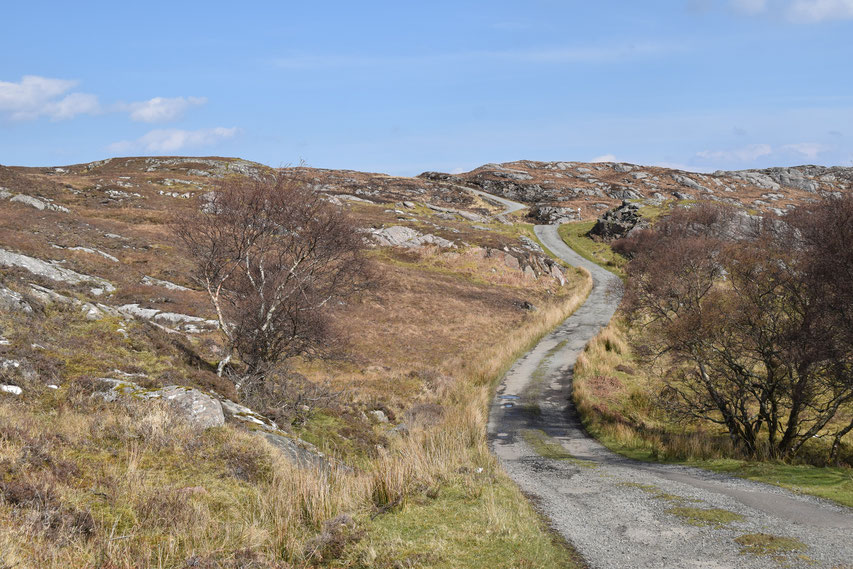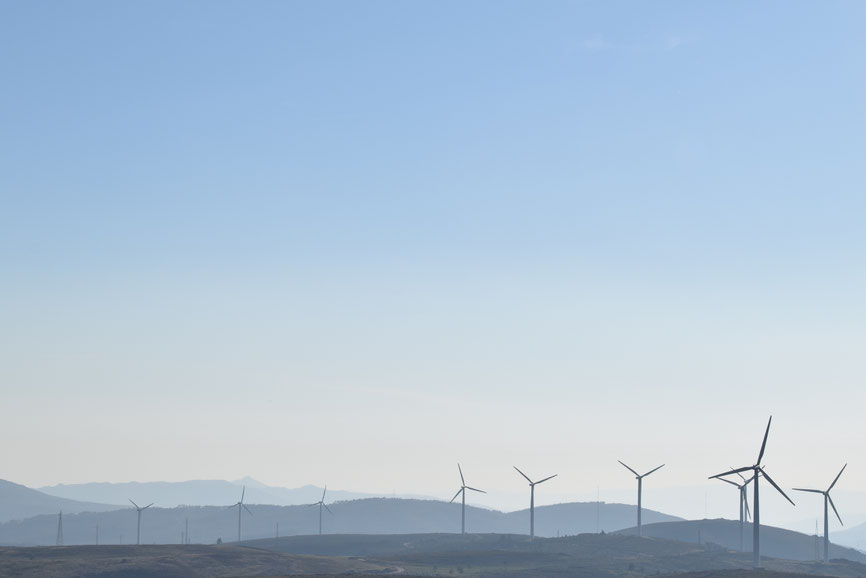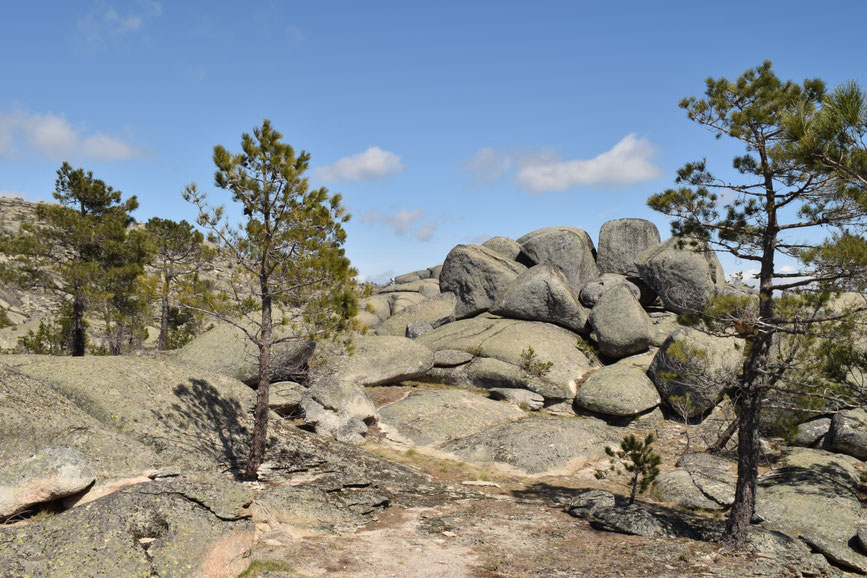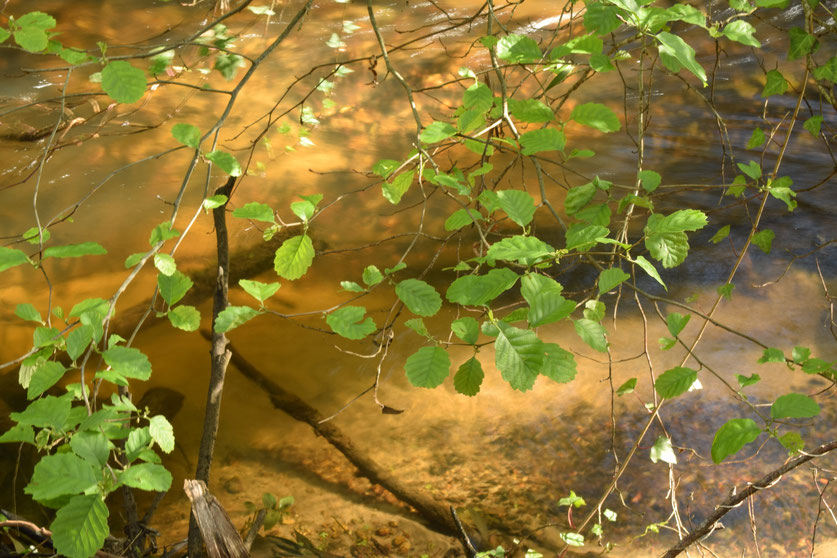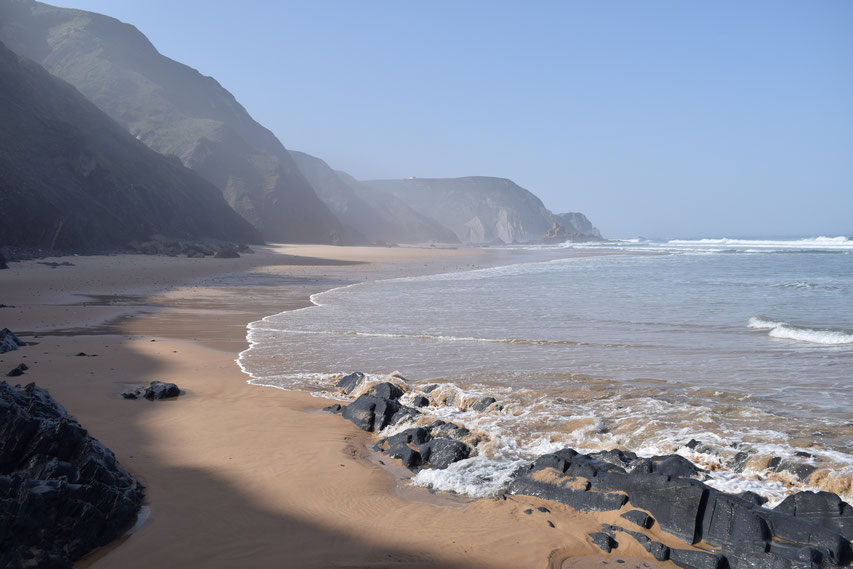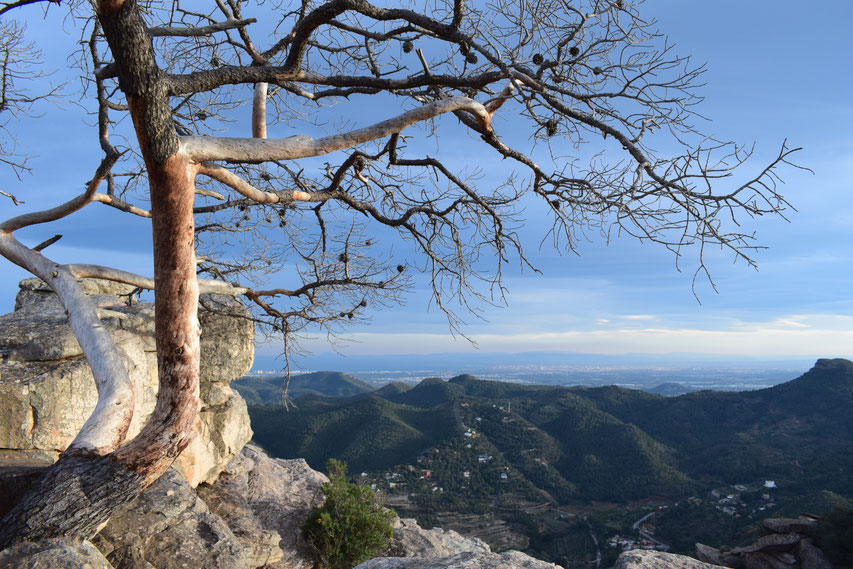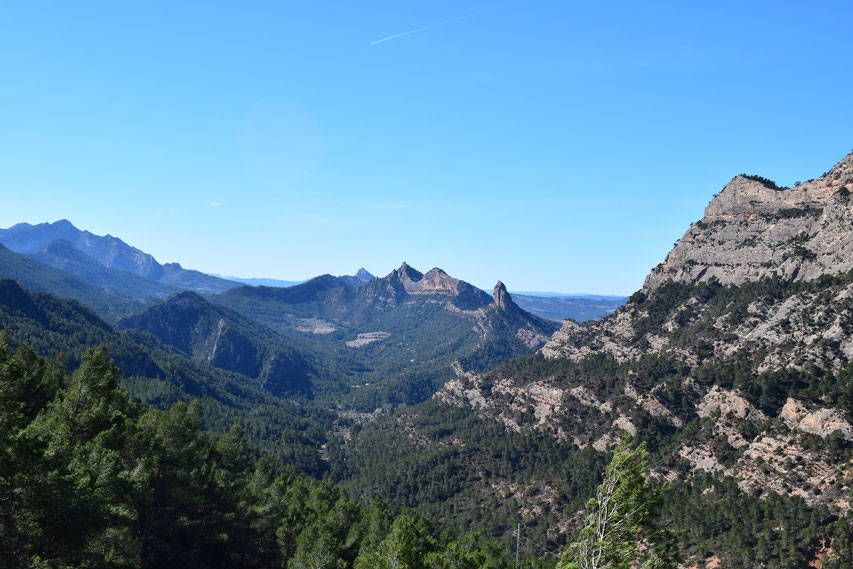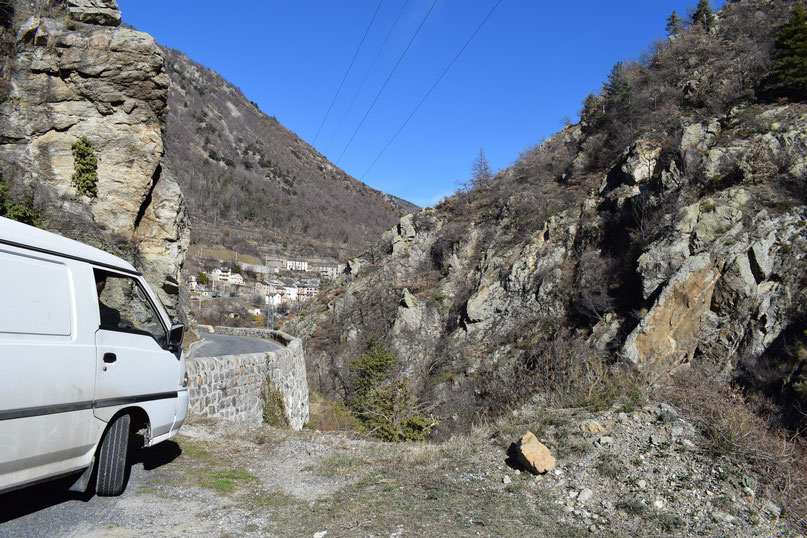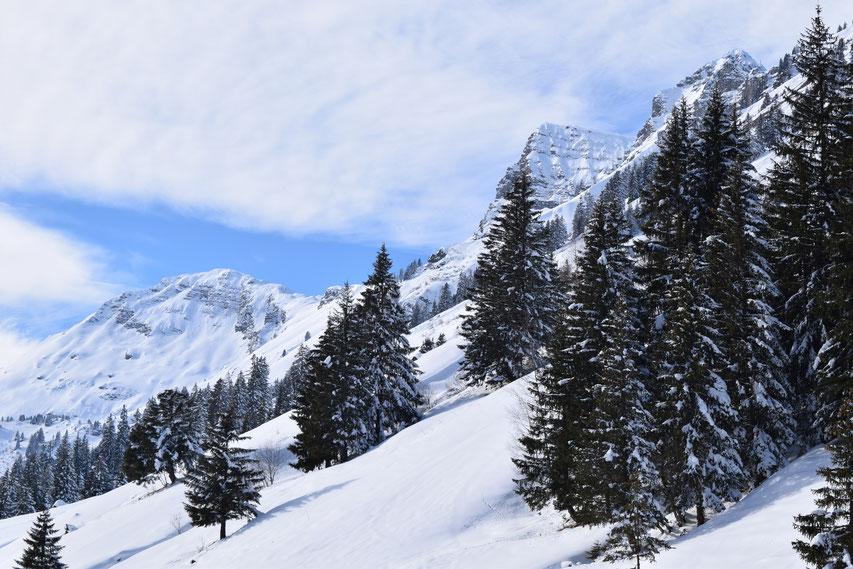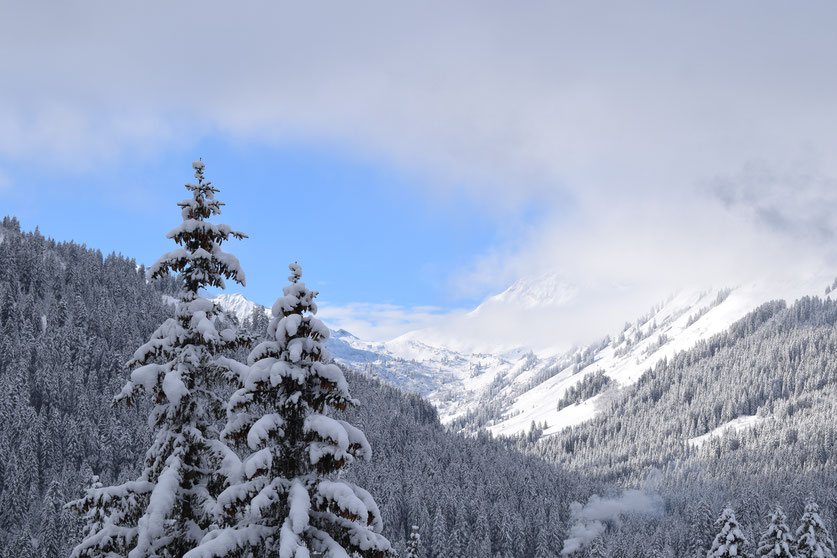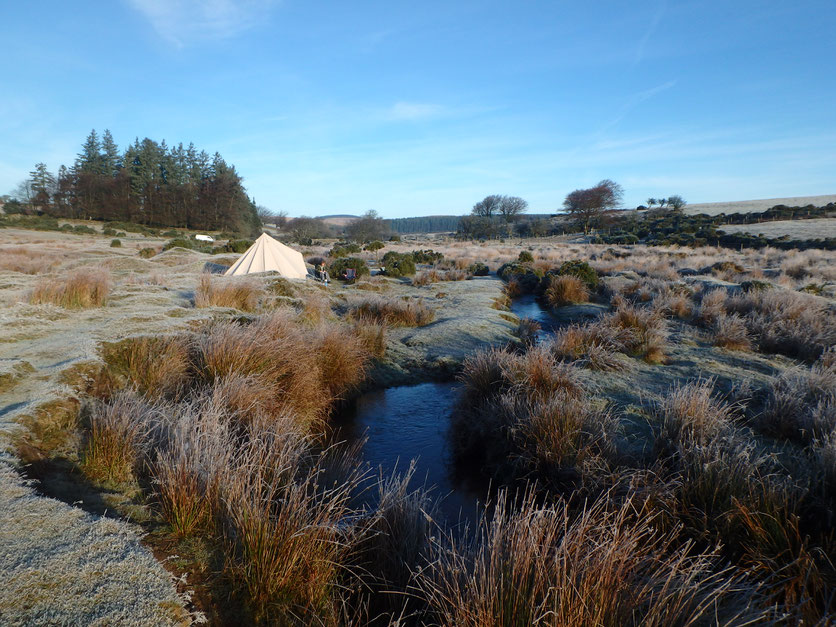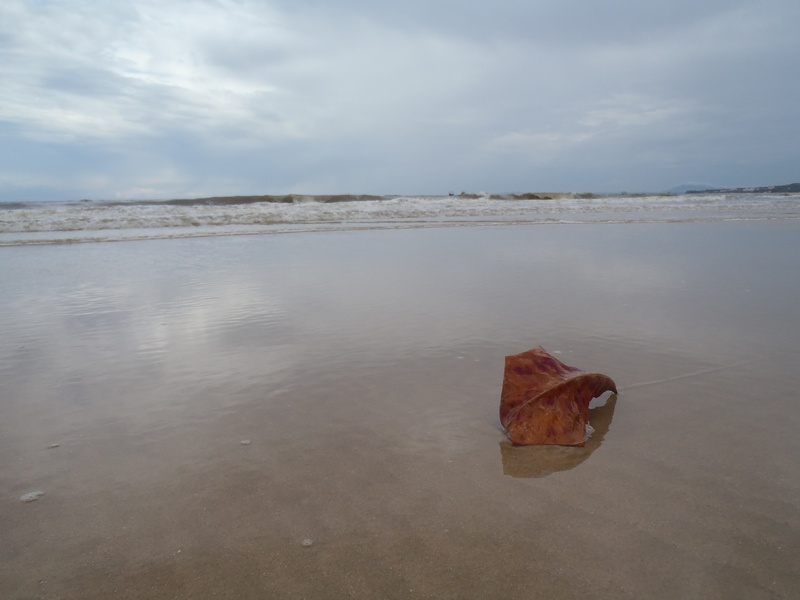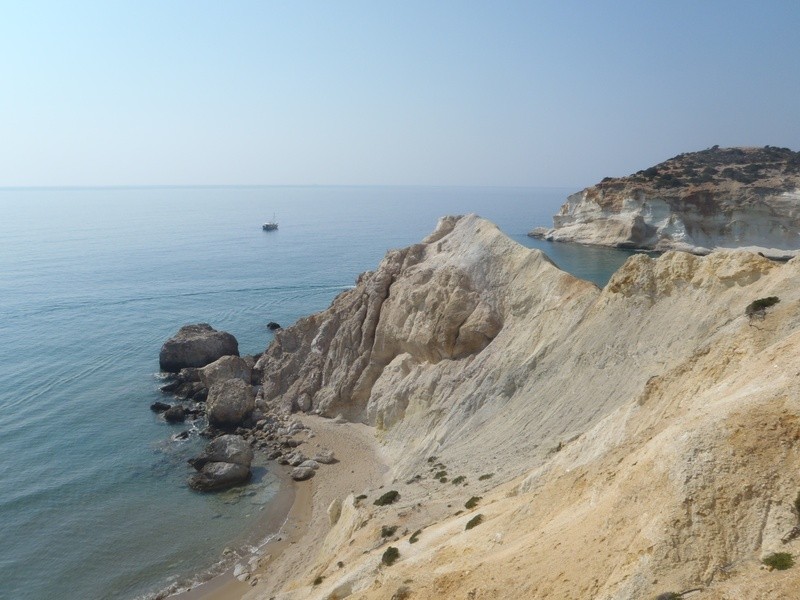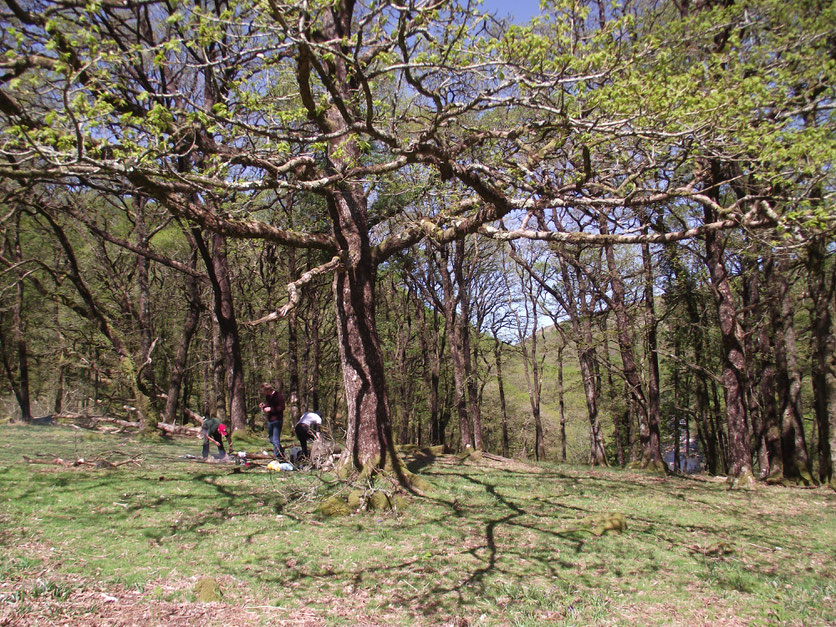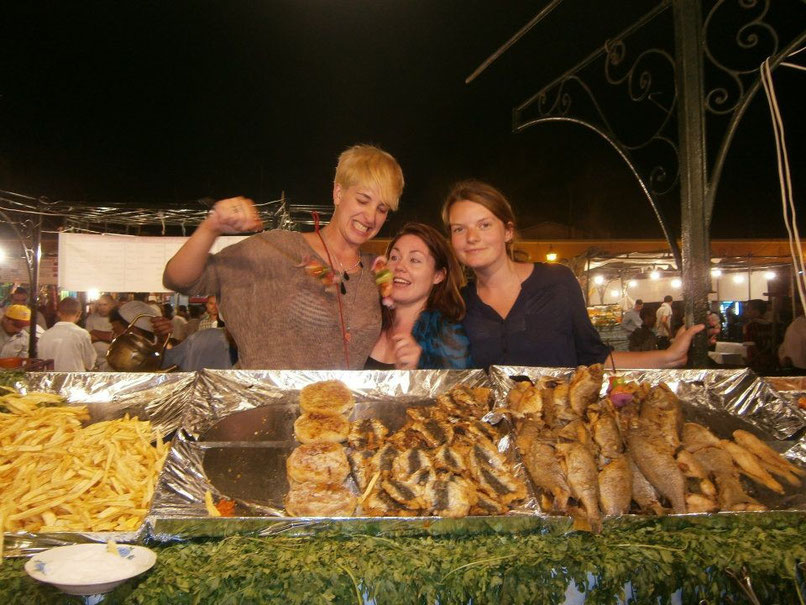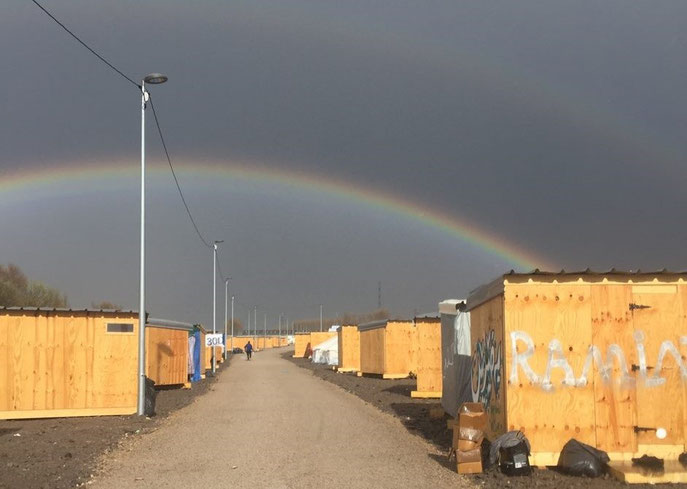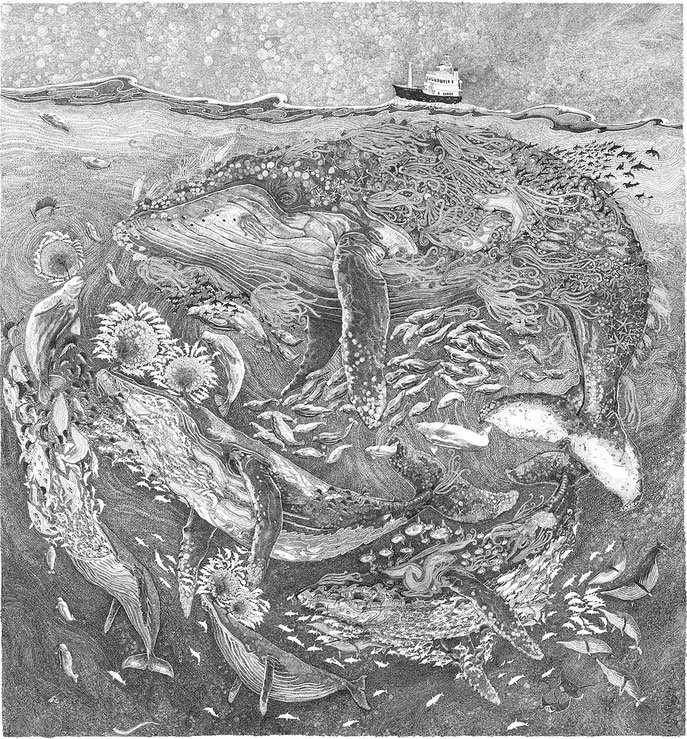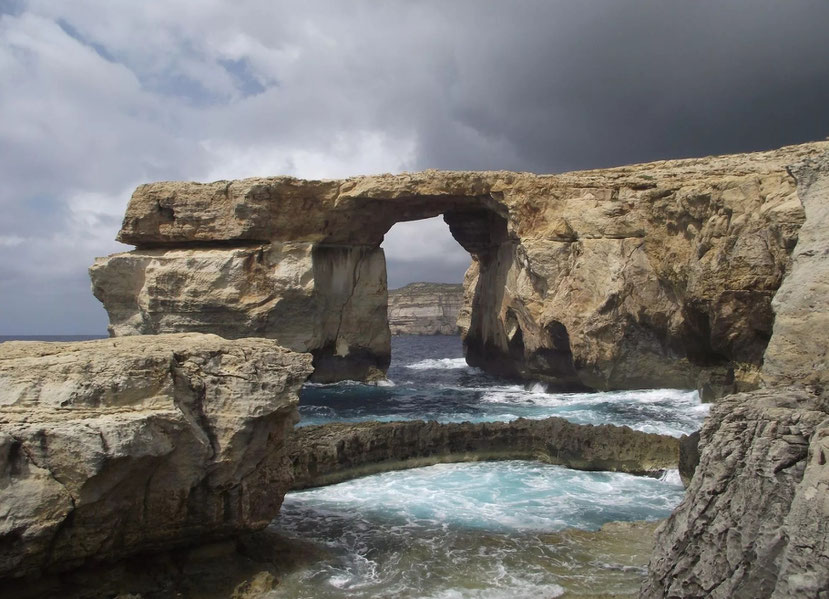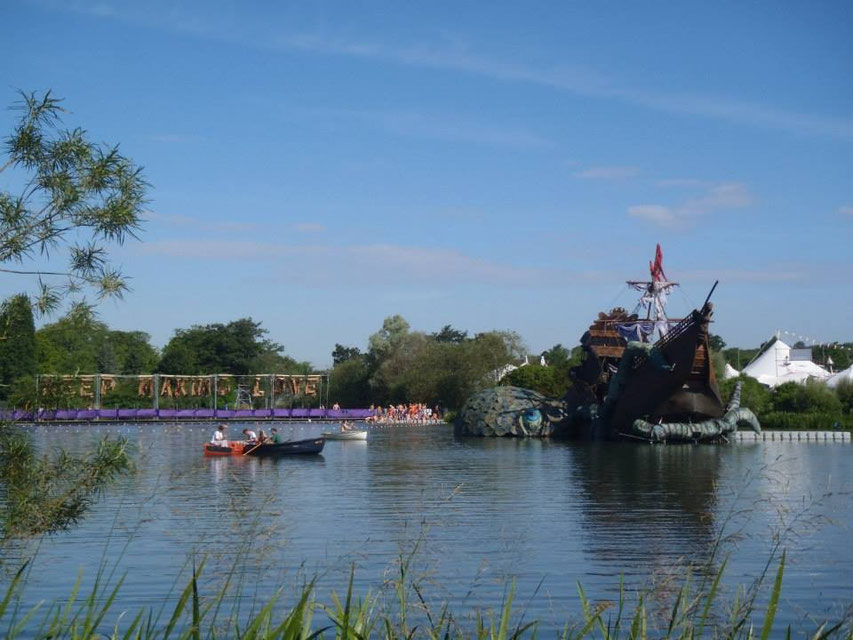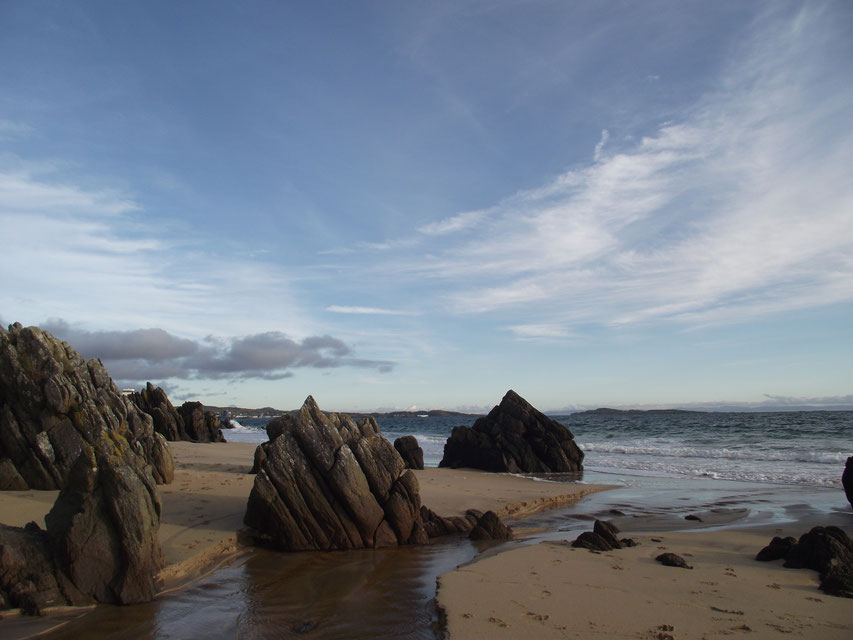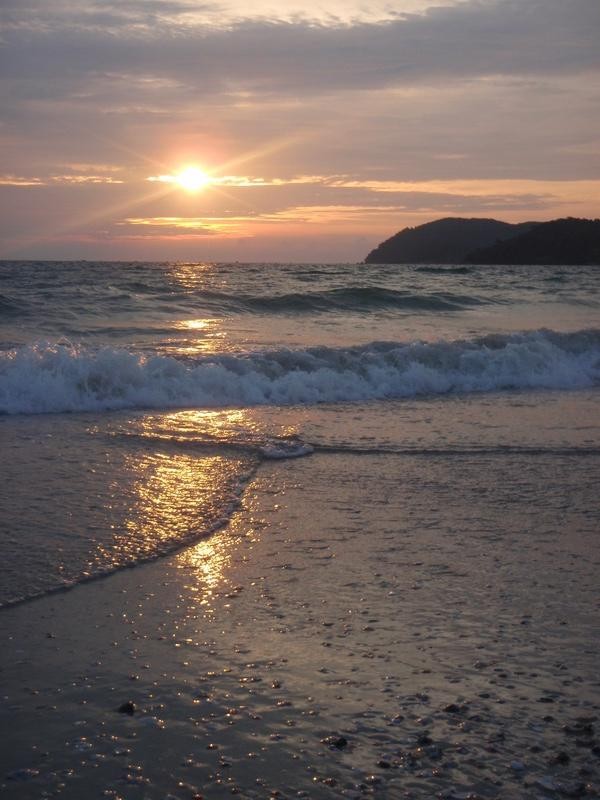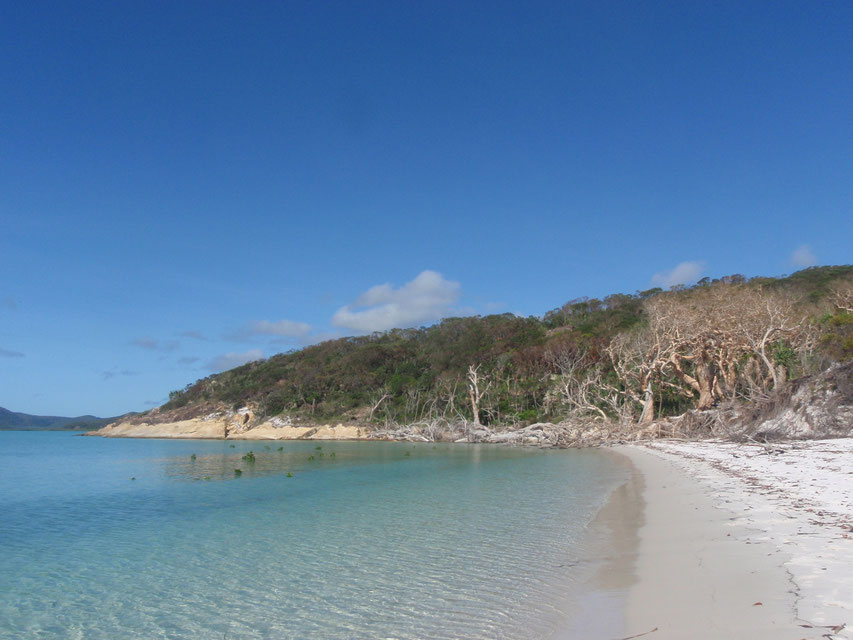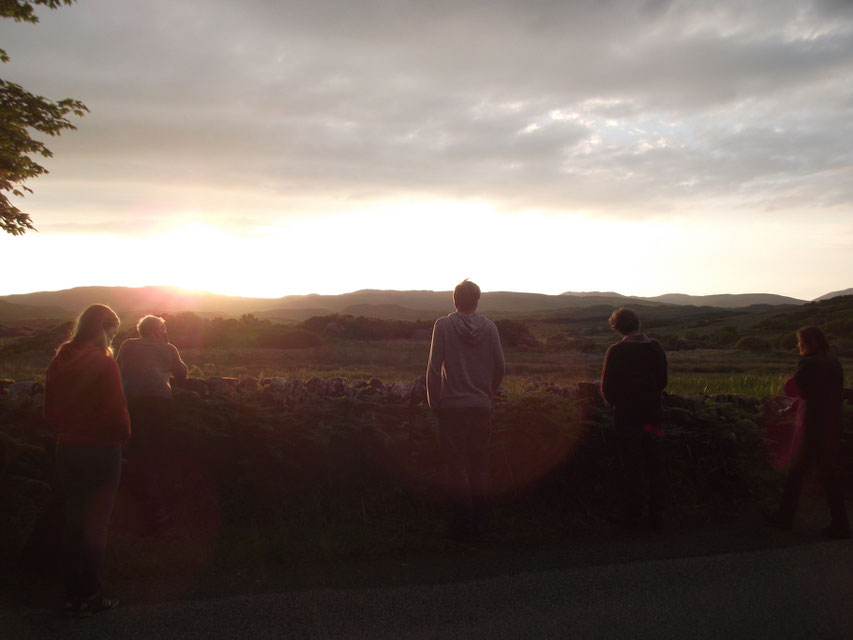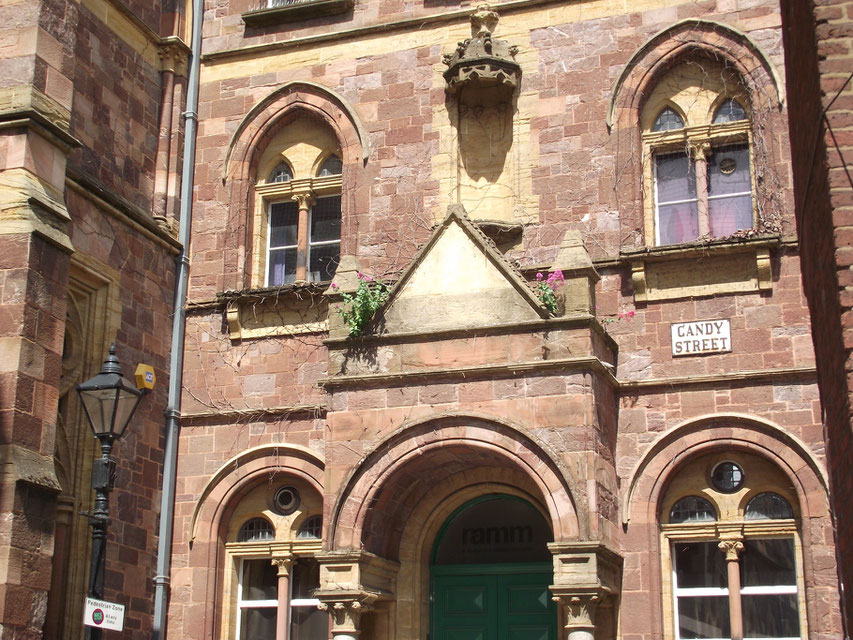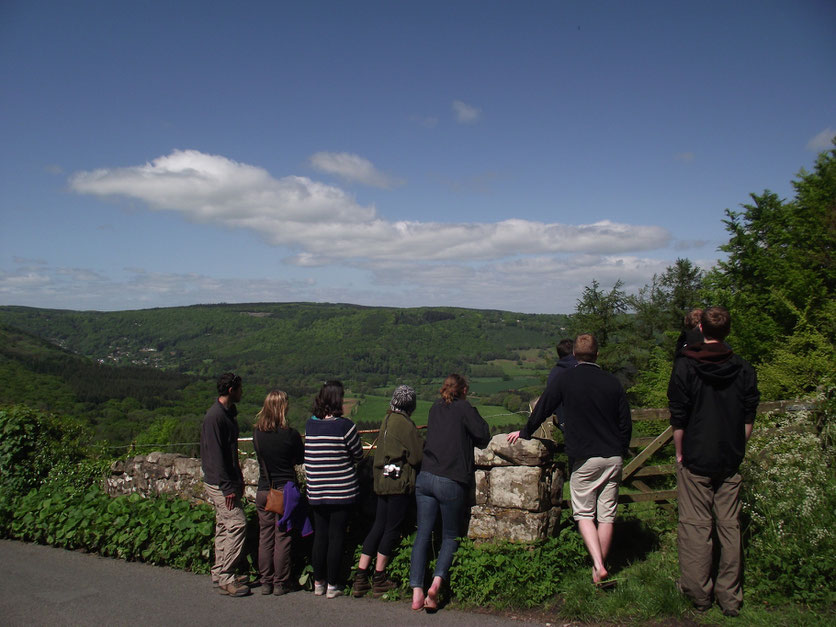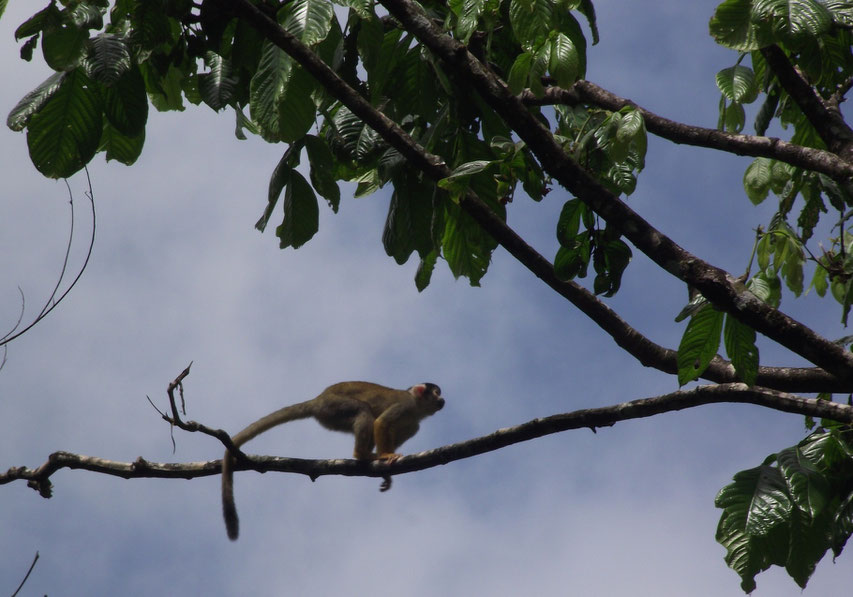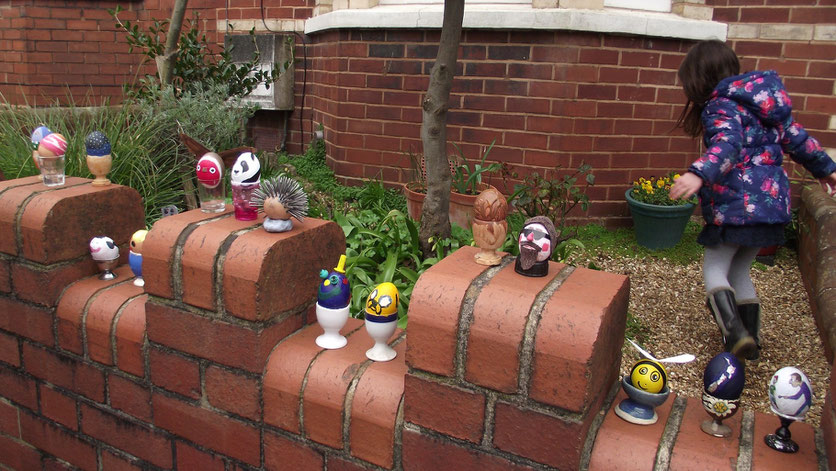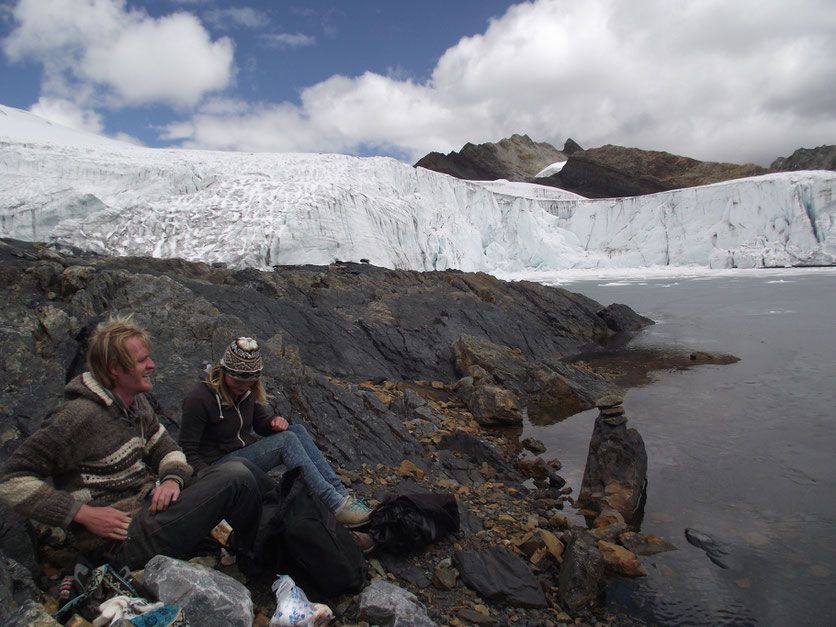Hatching Out
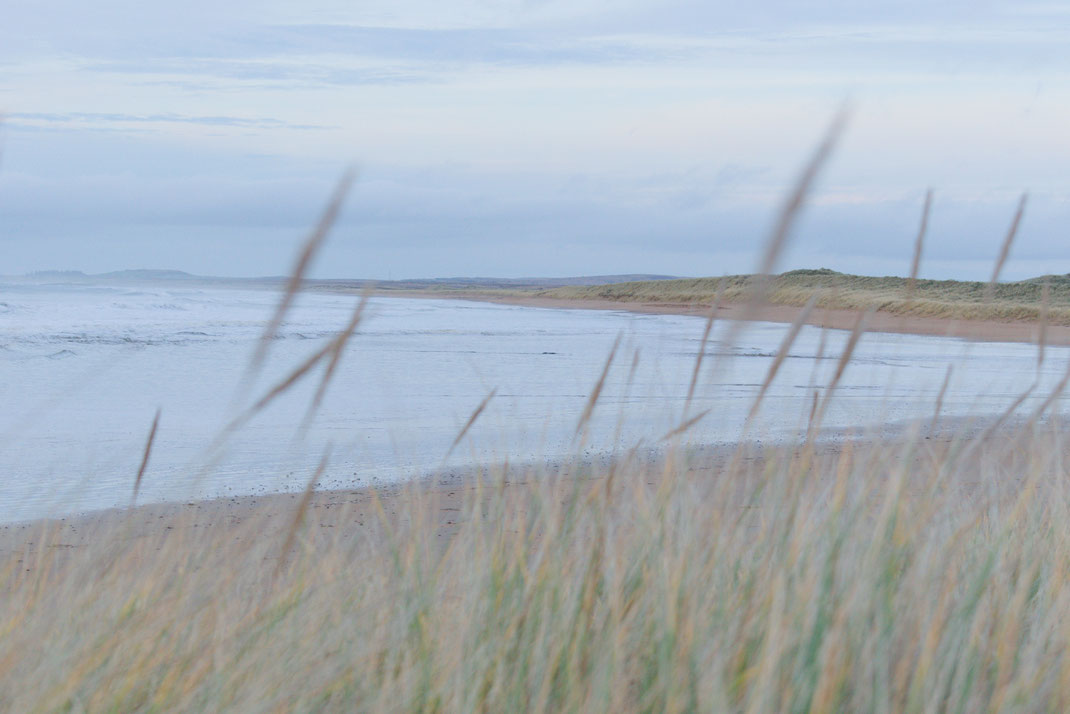
It happens every year.
I stand on the cusp of spring, which seems to be late this year, and wonder how I will do it. Like the dark comfort of depression’s blanket, winter is easy to sink through: the days that are over before they’ve begun, when going outside at all is enough for me to scratch an invisible mark on my tally of daily heroics. It’s not always a pleasure, but it’s slow, and I have time to think—too much—clearly.
The Laugavegur Hiking Trail - Know Before You Go and What to Expect
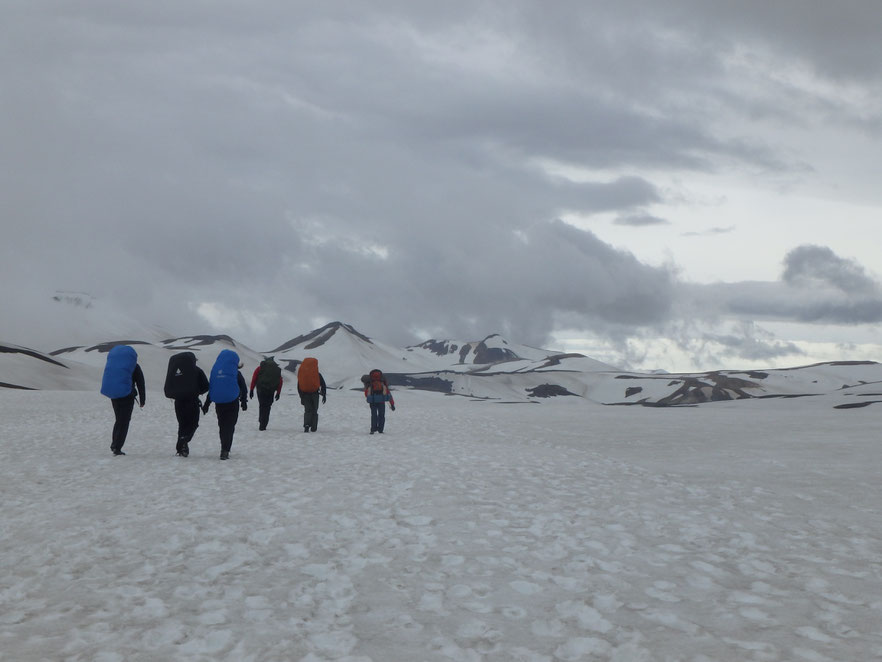
The Laugavegur is Iceland's most popular multi-day hike for good reason. Starting amongst the colourful rhyolite mountains in Landmannalagar, the trail climbs up into the snow fields and desolate black rock piles towards Hrafntinnusker, before descending into lush green moss and the beautiful lake at Álftavatn. Flowing through the valleys, there are several rivers to cross near Hvanngil, before the path leads further south over the black sand deserts of Emstrur—where every tiny green plant looks alien against its inhospitable backdrop. Finally, the trail comes to an end in the lush forests of twisted birch trees around Þórsmörk: a valley at the base of two glaciers.
Firstly, apologies that this post reads as one long lecture about all the things to do, not do, and be scared of. I'm publishing it to help readers prepare, rather than as inspiration, but I certainly do not mean to put you off. I have been working as a warden along the trail since 2017, and these are the things that I always wish hikers knew before they arrived.
This information is not official, but just from my personal experience. It is not a substitute for talking to the wardens in the Information Office at each hut, as there are some things which cannot be checked online. The hike is always dependent on the weather and other conditions on the trail.
Edinburgh: a week of jarring contradictions and mild identity crisis.
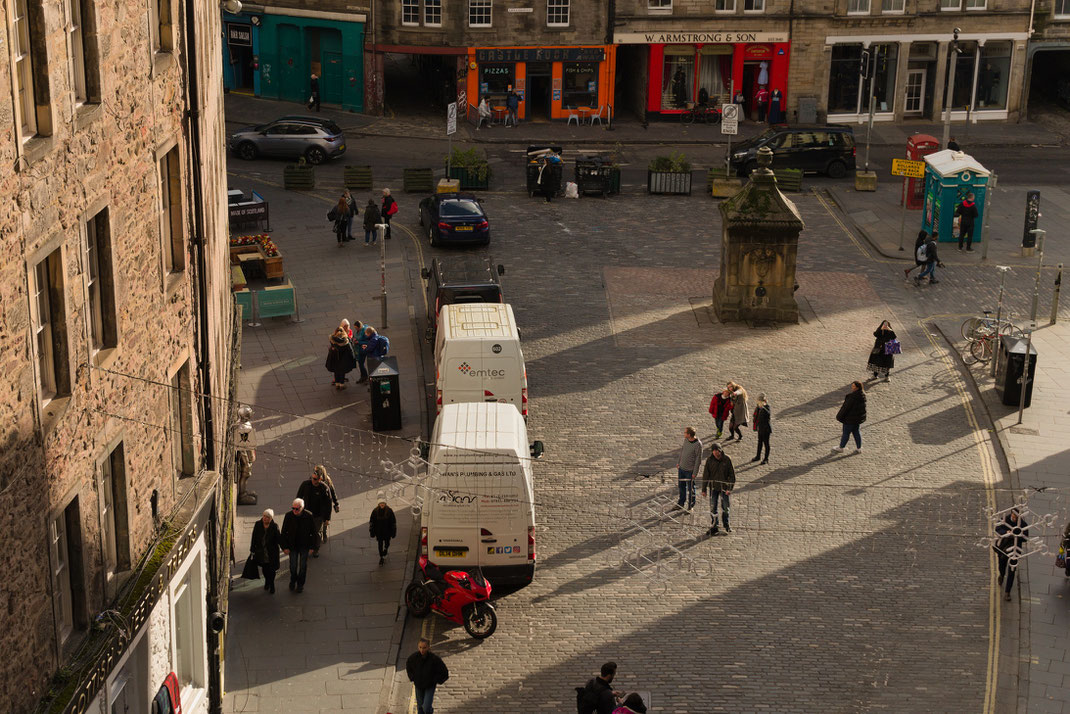
Despite the impression my lifestyle portrays, I don’t actually hate cities… which is a good job really, because I’m currently tasked with updating the Edinburgh chapter of a guidebook. Freelance travel writing, especially for general guides, is full of contradiction: you have to cover every traveller’s budget, all the while surviving yourself on poverty wages. My current gig isn’t badly paid, as they go, but I couldn’t afford to do it if I hadn’t worked all summer in Iceland.
This is how I end up catching the Megabus to stay in a luxury floating hotel.
Rok og rigning, Islay storms.

I'm preoccupied with autumn. It's not so much the orange leaves, or blackberries between thorns; I'm not a fan of 'pumpkin spice'. No, for me, autumn is the inevitable descent into winter's chaos.
We don't get much snow on Islay—a little, rarely, not enough to block the door—but the storms: the ones that steal your boat and rip branches from the trees; the nights of flying trampolines, when the lights go dead, and we have to read with candles. I shouldn't like them, I know, but I watch the Atlantic forecast, in anticipation, waiting for one to hit.
The Open End – Landmannalaugar, Summer 2022
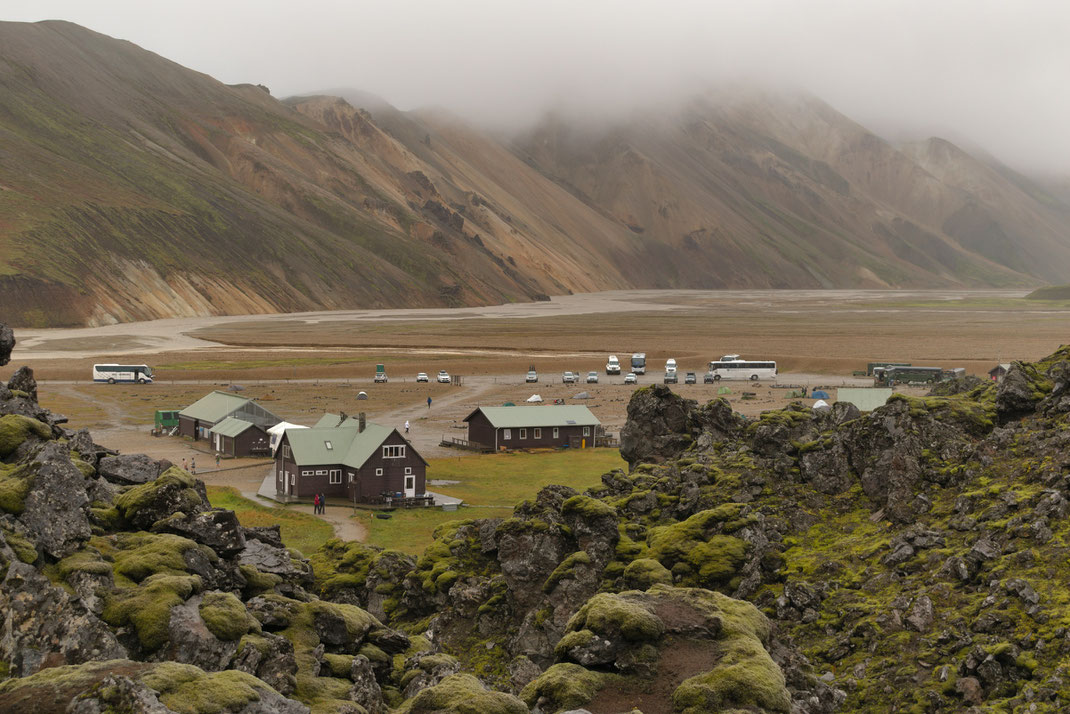
It was my own fault, I’d done it on purpose. 89 days in Fjallabak; it was quarter of a year, the summer, but for me the season felt short. 25 days on, 5 days off, but often I cut my breaks. Did I really need them? Would the place survive without me? The answer to the latter question, disappointingly, was always yes, but I tried not to think of that.
Landmannalaugar wasn't mine, but I wanted it to be. It’s an unflattering perspective; I’m not proud of that. I had no claim on the place – I cleaned its toilets and took the trash; I spoke to people passing through, but I wasn't in charge of them either. I had no business being possessive, and yet…
Ghosts
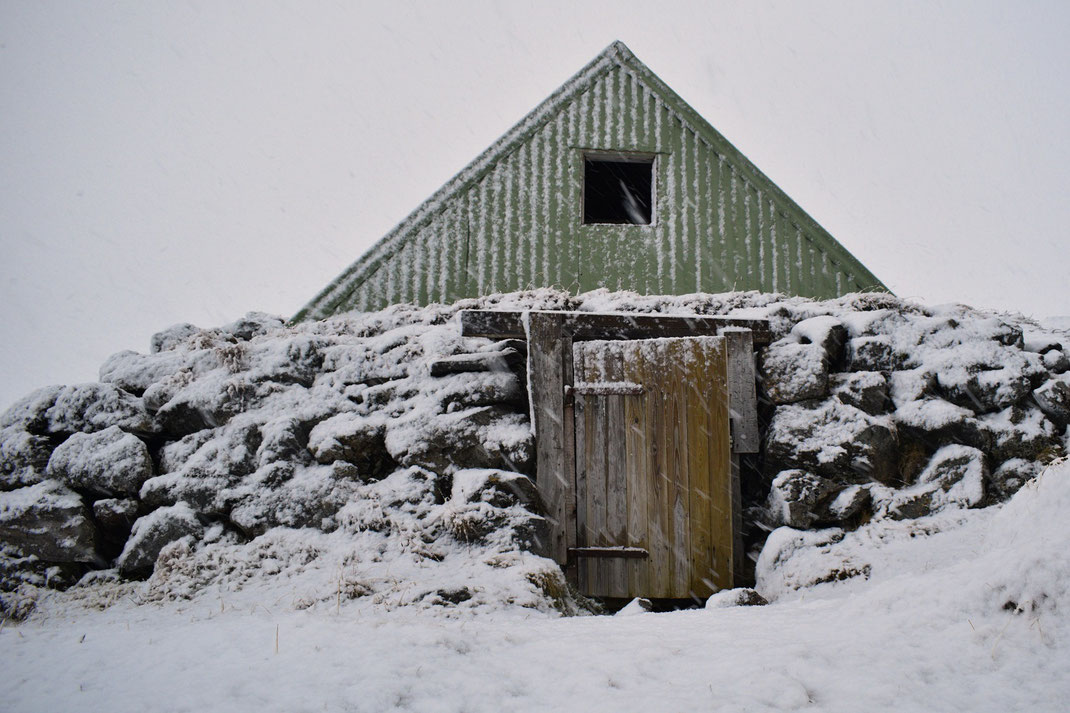
Fjallabak is full of ghosts. I've heard their stories: the woman that drowned in the lake, the boy that's scared of the dark... someone floating around in the lava field, trying to find their way
back to the hut through an eternal blizzard. But it's not those lost souls that linger in my mind. Marlene — by her own definition a ghost to me now — once explained that, for her, returning to
this place year after year — to these places in my case, connected but strangely far apart — we're surrounded by the shadows of our transient friends.
Echoes of chatter through mouthfuls of toothpaste, or a shared coffee to delay the tasks ahead. It's not just the people, but the place itself — remember when we could only see the roof? When we
were here alone and the light came on by itself? The things we fixed are broken again, and the paint is peeling back off.
Islands from your armchair – Muck
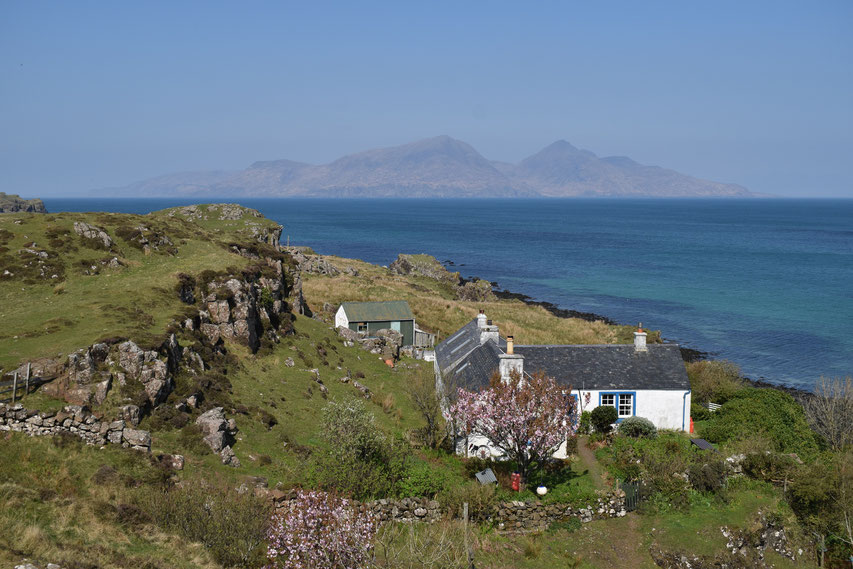
Reykjavik with sculptures and tourists in the sunshine.

It's more than half way through our season in Hrafntinnusker and although you might have some romantic notion of it being quiet or even lonely at the top of the mountain, that really couldn't be further from the truth. I'd been craving a little anonymity; somewhere people don't look at me twice and I can ignore them too. Ironically, it's often easier to find solitude in the city.
I had never seen Reykjavik in the sunshine before. The summer has been full of words and I've run out, but here are some photos...
Short and Half-Day Hikes from Landmannalaugar, Iceland.

I'm not going to pretend this is the "ultimate guide" or draw you a map as, having worked there for much of the last two summers, I know how important it is that you talk to the wardens at Landmannalagaur and ask for their most current advice. Please refer to the text at the bottom of this page for information you should know before you arrive.
How to check the weather before hiking the Laugavegur.
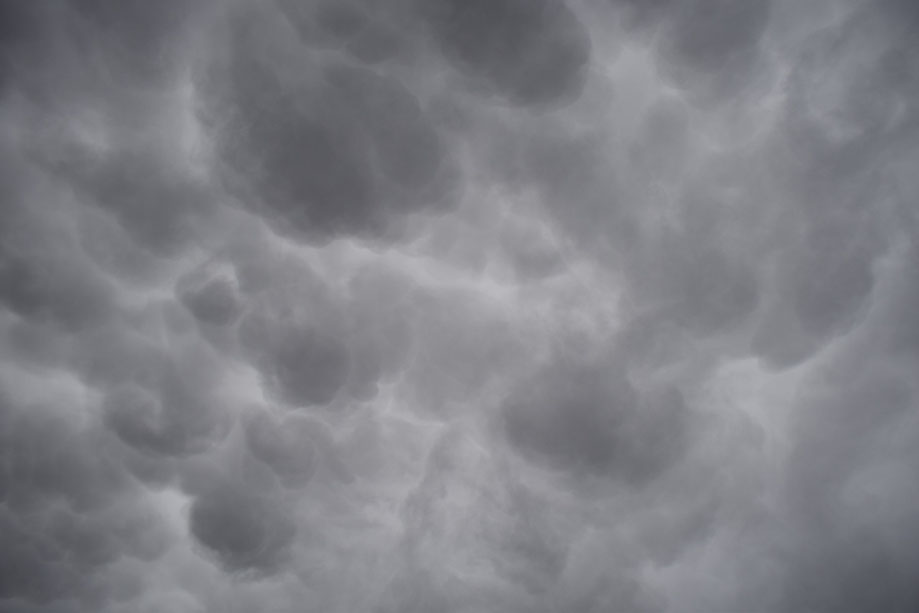
Being flexible with your timing and working around the weather forecast can make the difference between a great hike and a disaster.
The two most reliable online weather predictions are www.vedur.is and http://belgingur.is (often more accurate for Hrafntinnusker). You should familiarise yourself with both of them. It is good to look some days in advance, but things can change quickly and you should not forget to make a final check just before you leave civilisation. Wind and rain are the most changeable factors which I have focused on here, but you should also be aware of general temperatures day/night, the effects of wind chill and decreasing hours of daylight. Fog comes and goes at will and your only real defence against it is a GPS device.
Please read my Laugavegur preparation and packing list posts well in advance of your trip.
Always speak to the wardens at Landmannalaugar or Langidalur before you start and in each campsite you visit along the way, to ask their advice about weather and conditions. Up-to-date local knowledge is impossible to find online.
The Gambia - an Introductory Guide.

I first wrote a version of this post for Anita Hendrieka, but I put a lot of thought and effort into it, so I wanted to share it with you here too.
Over the past decade, I'd spent plenty of time exploring Europe and South America, some in South East Asia and even Oceania, but was ashamed to have never ventured further into Africa than Morocco. I didn't have any idea what to expect from The Gambia although, having studied History, I had no illusions as to why this tiny river-bank country in West Africa spoke English.
Our colonial past and resulting wealth is uncomfortable and unavoidable, but I felt very little of the resentment I expected. Life has been, and continues to be, very hard for the majority of Gambians. Wages are extremely low and there is a lack of opportunities for young people which increases the further east you travel. Despite this, Dan and I were usually treated with warmth and respect, never felt at risk of a crime (a notable difference from certain parts of South America) and was guided through the country like a baton in a never ending relay race of people offering to help. Travelling east, “up-country”, where the taxis turned to donkey carts and people were still surprised to see us was easier than we'd imagined and I believe that we would have had a very different experience had we spent our time in cities and tourist beach resorts.
It is a country of violent seas, fishermen and complicated mangrove networks. The variety of birds is world renowned and my only naive resolution (to see a baobab tree) was completed countless times within the first week, but (for me) The Gambia was about Gambians.
Christmas in Green - Dogs and Beach Cleans on Islay, Scotland.
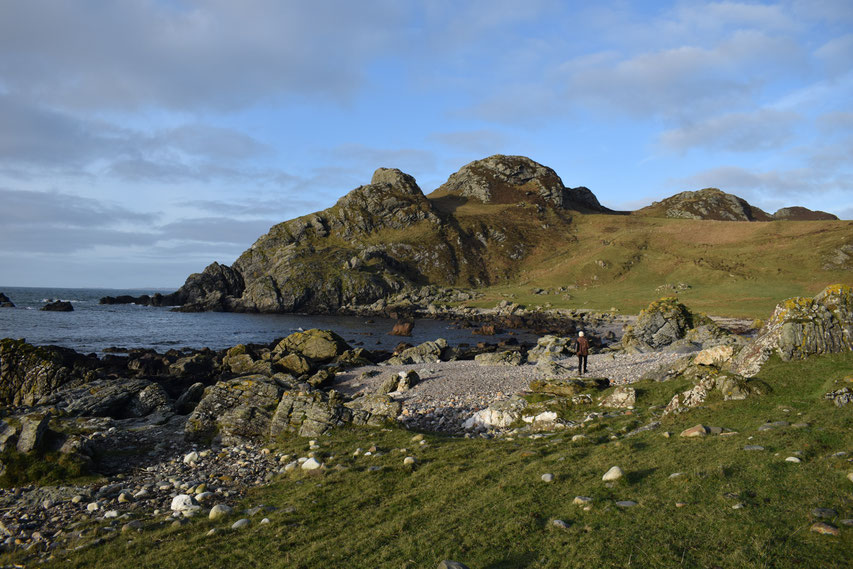
I had not seen my family, or visited the Hebrides, since the previous January; a trip to Islay was long overdue...
Why 2019 is as good a year as any to try and save the World.

Twitter tells me that the German word of the year for 2018 is weltschmerz (n.) - the feeling of depression that comes on when you compare the current state of the world with how it could be ideally.
However, in a continuing monologue from my previous post, I have reached the conclusion that we must continue to fight "the good fight" in whatever ways we can feasibly manage [even if they seem pointlessly small by themselves]. I never really believed otherwise, but sometimes it would be a great relief to just forget about our impending doom for a moment. Unfortunately, we don't have time; climate scientists have warned there are only twelve years for global warming to be kept to a maximum of 1.5C, beyond that point even half a degree will significantly worsen the risks of drought, floods, extreme heat and poverty for hundreds of millions of people, not to mention the effects on our ecosystem. The oceans are drowning in plastic, habitat for our dwindling numbers of remaining species is being eradicated as I type, we are still ignoring the millions of refugees and homeless people worldwide and we seem totally unable to tackle the vast inequality in our own country (the UK for me), let alone internationally.
We need to do something dramatic and I am so proud of all my friends who are trying. Personally, I am starting small as I am not sure what else to do right now.
Train Brain Splat - "How to Save the World?" Loop.

Desires for less and more jostle under my consciousness. I can't settle. I'm chasing an ever-elusive "enough", but am always swamped or somehow lacking. The thought of this perfect life, shaved of excess, weighs on me. My things totaled fill me with guilt, I'm ashamed of my consumption and the ease of my existence. Privilege is not merit based, we cannot buy "content"* and maybe happiness only exists in retrospect. The earth is on the brink of implosion but, with varying degrees of drama and self-importance, we've been saying that since time began—Apocalyptic Literature—I studied it. To justify our existence in the Universe we have to exaggerate our impact, if only to ourselves. Maybe we could save the World? Maybe someone... something?
From sunrise to sunset, for now we're in the half-light.
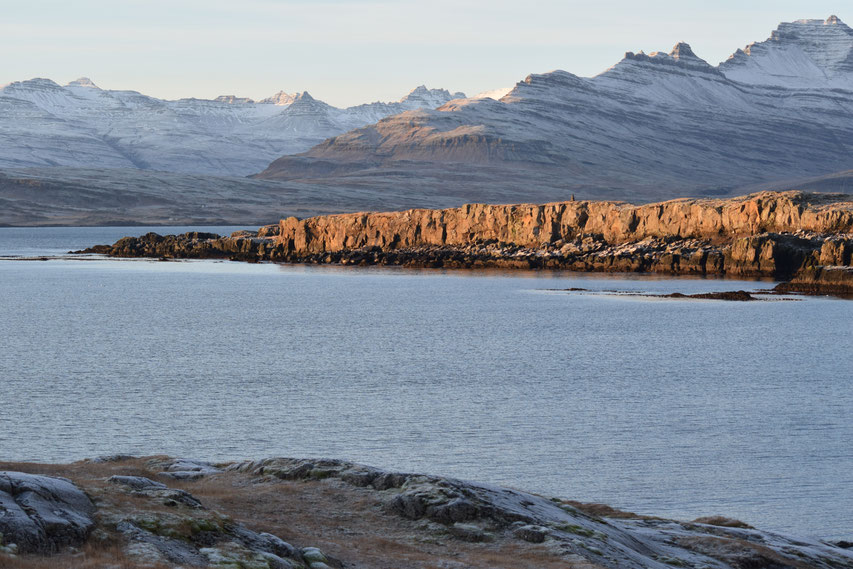
About autumn, haust, in the East Fjords...
Why are phones so important to refugees? - introducing "Phone Credit for Refugees & Displaced People"
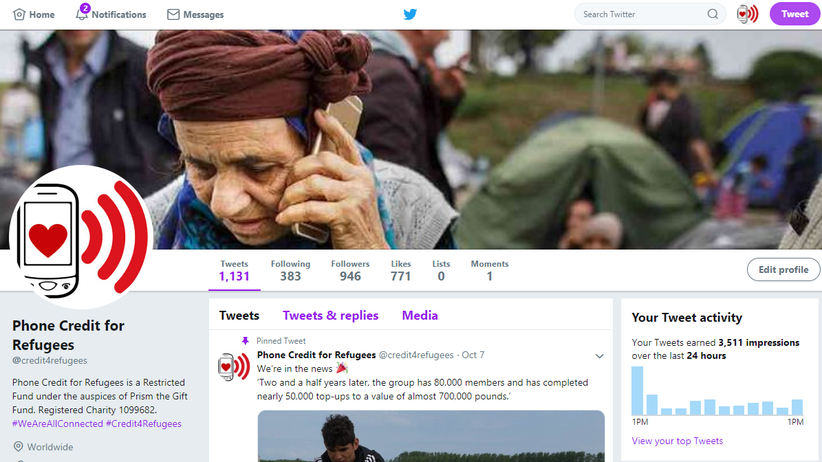
It's nearly two years since I left Calais. The refugee crisis is less of a deafening scream, swallowing my other thoughts. Now it is more of a solid lump, a quietly judgemental resident
in the side of my mind; we are cohabiting the space and doing a somewhat reasonable job of getting on with another sort of life.
This isn't about my head though; this is about the group "Phone
Credit for Refugees and Displaced People". Observant readers will have noticed their link at the bottom of my site and anyone who follows me on social media was probably bored of
hearing about them years ago.
"You don't even have a smart phone Katie! You haven't checked your voicemail for three years! Why do you care so much about refugees having phone credit?!" I hear you protest.
Let me tell you why it is so important for refugees to have phone credit...
Moving East; to Winter's Edge.
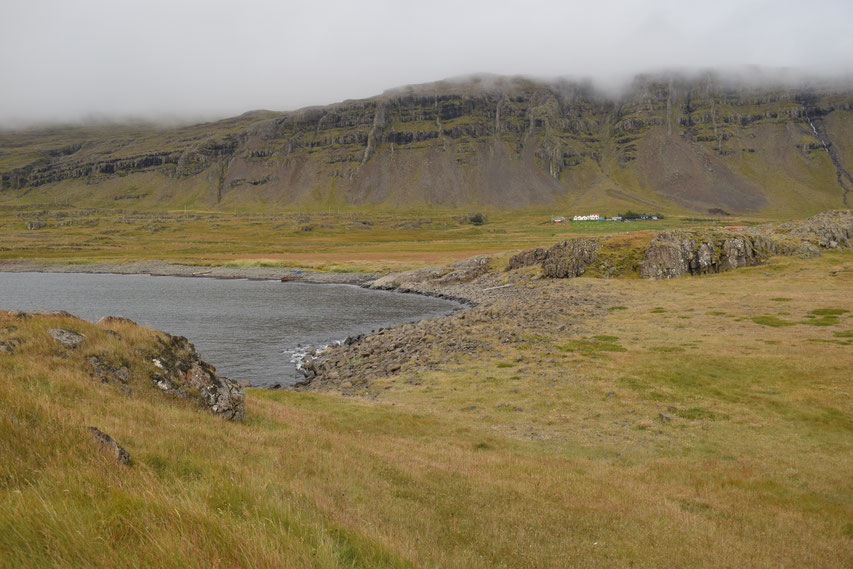
Over the last six months, this blog has become a hikers' instruction manual. My "warden" job in the highlands is totally immersive — I love it for that — and there is little space in my brain for any other line of thought. Since we left, I've lost my focus; I've been stuck in my head and forgotten how to write my way out. Those of you who only check this site* will be totally unaware that we have moved to the East Fjords.
*I post photos on my facebook page most
days.
Skalli — 15km day hike from Landmannalaugar.
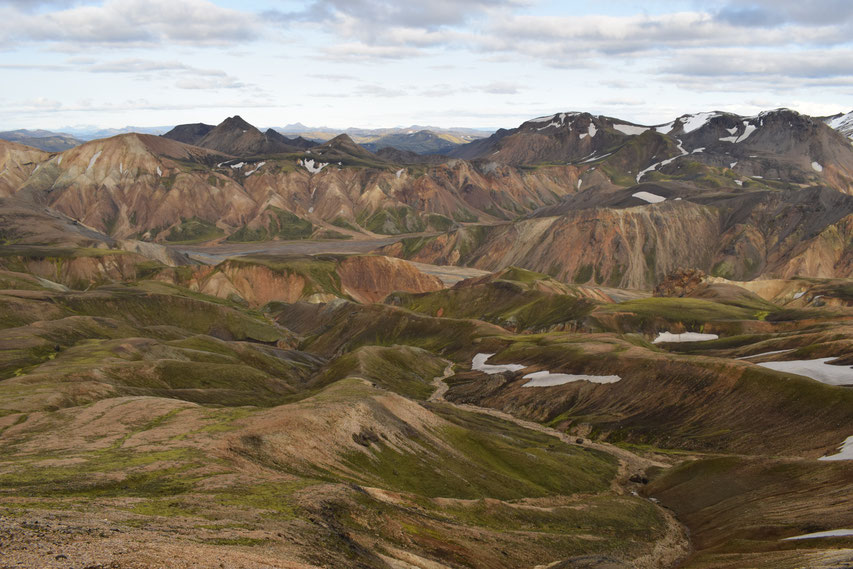
Skalli is a marked, 15km day hike from Landmannalaugar. The peak is around 1027m, but the path skirts around it on the southern side. Landmannalaugar is at 550m, so the elevation gain is probably something around 460m. Depending on your fitness, pace and ability, you should allow between six and eight hours to complete the loop.
Unless you have a GPS devise (with the route saved into it), it is only advisable to attempt this hike in good weather and later in season — towards the end of July, August and early September — once most of the snow has melted [and you can see the stick markers]. The wardens in the information center can advise you whether conditions are suitable on any given day, so you should always talk to them before you set out. Don't be disappointed if it is not possible for you to do this hike as there are many other amazing day hikes around Landmannalaugar which are less weather dependant.
Please note the the majority of these photos were taken on two incredible days of sunshine. You would be very lucky to experience such weather on a short trip to Landmannalaugar, but it is definitely worth checking the forecast before you arrive and planning your trip around it.
Hiking the Strútsstígur — from Hvanngil to Strútur, Áftavötn and Hólaskjól.
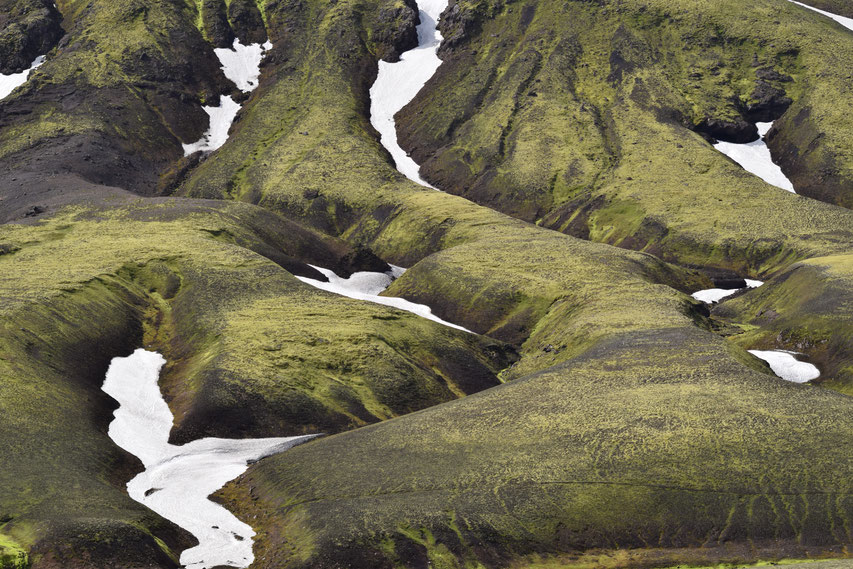
Strútsstígur is an unmarked path; it is not possible to follow indications or footprints. It is also not guaranteed that you will meet staff working in campsites or even other hikers. It is therefore, vitally important that you are experienced at hiking in Iceland, have a GPS and are entirely self-sufficient. I have added some useful information at the bottom of this article.
Behind the Scenery — Plastic Pollution and Some Small Ways to Help.

Painfully brought to the public's attention by the genius series Blue Planet II, plastic pollution has been a hot topic this year. As bloggers, photographers and general Planet Earth enthusiasts, it's easy to present the places we love as we wish they were; to crop out the ugly parts or direct our cameras elsewhere. This collaboration is an attempt to rectify the rose-tinted vision we have often portrayed. Nowhere is left unaffected by the plastic plague.
What to Pack for Hiking the Laugavegur Trail, Iceland.
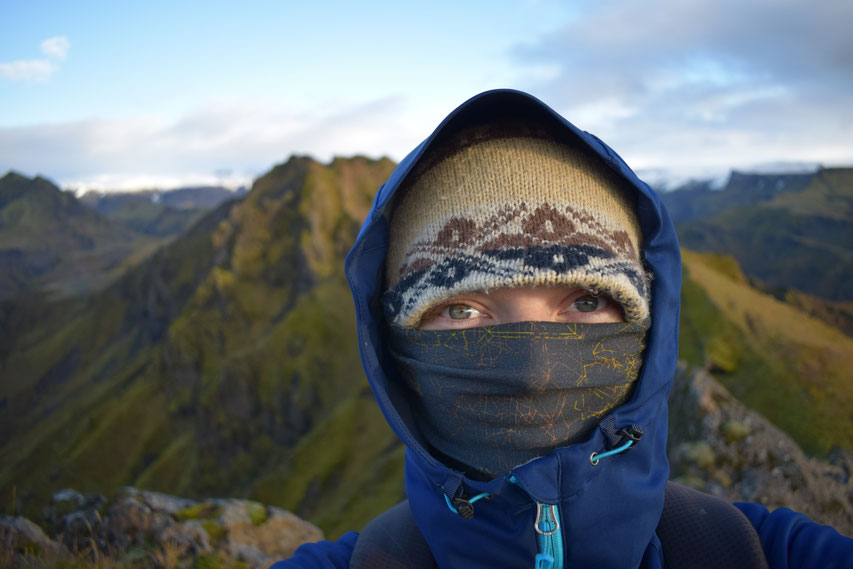
2018 was my second Summer in the Icelandic Highlands. My job as a warden revolves around the Laugavegur hiking trail and its campsites.
Passing through areas of colourful geothermal activity; across snow plains; over ice bridges; through vast, black lava fields; and finally down into a twisted birch forest with the view out towards two glaciers – all within 56km – it's no surprise that the Laugavegur is Iceland's most famous hiking trail. It's an incredibly beautiful trek, but for every nine people I've met having the time of their lives, there was [at least] one who hated it. Aside from a defeatist attitude or serious lack of physical fitness, the most certain thing to ruin your hike is the lack of adequate gear. Though temperatures are not that much more extreme than many other places in Europe, the wind can get phenomenally strong, and you'd be very lucky to pass a whole day without having to don your waterproofs.
Before catching a bus to Landmannalaugar (or Þórsmörk), please also read these articles I wrote about how to prepare for hiking the Laugavegur trail and how to read the weather forecast. They include everything else you should know.
Popenguine - Peace and Quiet on the Petite Côte, Senegal.
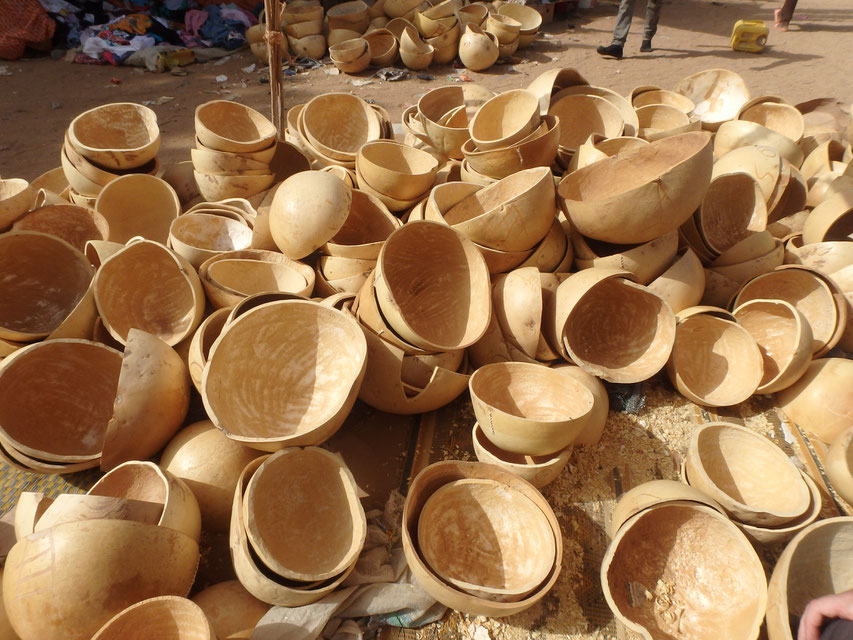
We arrived at Popenguine at the end of the Pentecost festivities. The streets were a mess of half-deconstructed market stalls, stumbling revellers and strewn plastic cups. Feeling tired from the
journey, we were thankful to find that – apart from pointing us in the direction of the ancient church – nobody paid us much attention. There were a few other toubabs*, enough to make us
unremarkable, but they mostly seemed to live there and (in May) there was little tourism to speak of.
*White or foreign people.
Backpacking The Gambia and Senegal - a Complete Packing and Pre-Departure Check List.

My partner Dan and I were backpacking around The Gambia and Senegal for six weeks. This is the information I was looking for before we left...
Unless (like us) you are carting around bodyboards or other specialised equipment, there is no reason why you can't fit all your luggage into a "day pack", hand-luggage sized bag. The warm
weather means you can usually wash and dry things within a few hours, but if you do find you need more clothes, a visit to a fabric shop and tailor is fun and affordable (between three and ten
pounds for a shirt in The Gambia) and second hand clothes markets are common. Almost anything broken can be fixed, so make sure you ask around before throwing stuff away.
"Un Peu" de la Petite Côte and Plenty of Pelicans at Mar Lodj, Senegal.
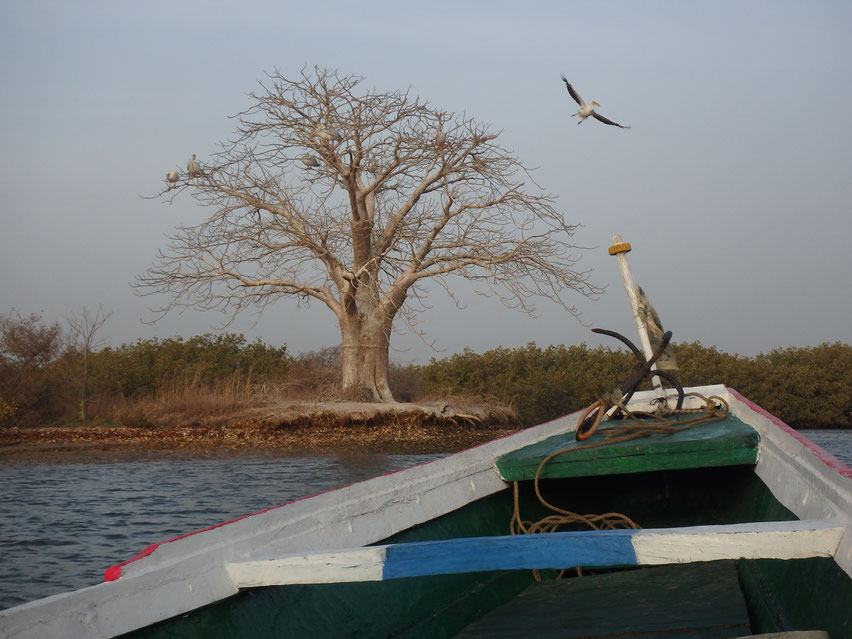
After crossing the border into Senegal, we made a bee-line for the coast. We were looking for surf in Toubab Dialaw; it took three days to arrive. We walked south, right out of the village, to where women were collecting rocks from the sea and then a little further, and bobbed in the waves like seals. When it got bigger, the ride was short and dumpy, smashing Dan into the sand and grazing his head. It didn't stop him trying again of course.
Practical Information - Gambia/Senegal Border Crossing (Amdallai/Karang)
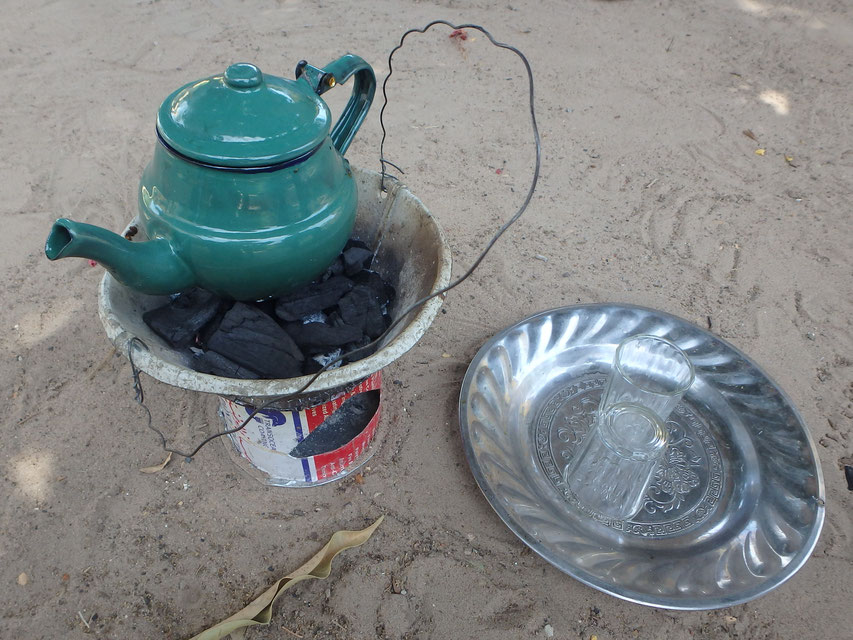
This is a very boring post, please proceed directly to either of the following unless you need advice:
- Slowly, slowly up the river Gambia - from Sanyang to Bwiam.
- From Bwiam to Basse, but mostly around Janjanbureh, then back west along the North Bank.
If you are looking for pre-departure packing and preparation tips for backpacking in The Gambia and Senegal, I've written a whole post for you!
From Bwiam to Basse, but mostly around Janjanbureh, then back west along the North Bank - The Gambia
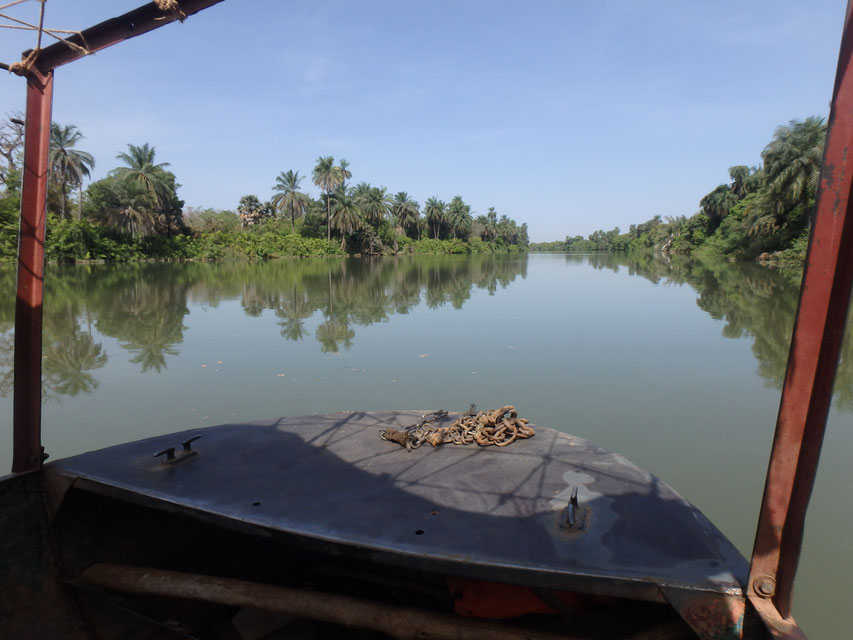
Travel onward from Bwiam was hot and mildly confusing. Initially we caught a big bus to Soma. Out of the window, what limited modernity we had become accustomed to dropped away; roofs changed to thatch and houses shrunk, men began to wear robes more commonly than t-shirts and horse carts soon outnumbered private vehicles. Soma was predominantly a busy intersection, swirling with dust and criss-crossed by semi-panicked donkeys. We went to check the bank for an ATM and were greeted by a nervous, armed security guard, his finger on the trigger, who seemed eager for us to leave. It was much more confusing than threatening. We quickly found a gelly-gelly bound for Janjanbureh.
At any given time, it is rare to be further than thirty centimetres away from a baby on public transport. We provided in-transit entertainment or sometimes accidental terror. Up until that day we had found travel to be quite fun, but the novelty wore off as we waited for the minibus to fill up; trundled off after a bump start (nearly leaving Dan behind); and proceeded to stop what felt like one hundred times, once for as long as an hour, over as many kilometres. To the other passengers dismay (and our confusion) merely a tenth of the journey away from Janjanbureh, we were turfed out of that bus and onto another. Then we waited for that one to fill up. All in all, one hundred and eighty kilometers from Bwiam to Janjanbureh took us seven and a half hours. Dan was getting an increasingly bad back and upon arrival, we accidentally paid one hundred dalasi instead of ten for the five minute ferry crossing across the river Gambia. Finally, we arrived on the north bank dispirited, dirty and on the verge of heat stroke.
Slowly, slowly up the river Gambia - from Sanyang to Bwiam.
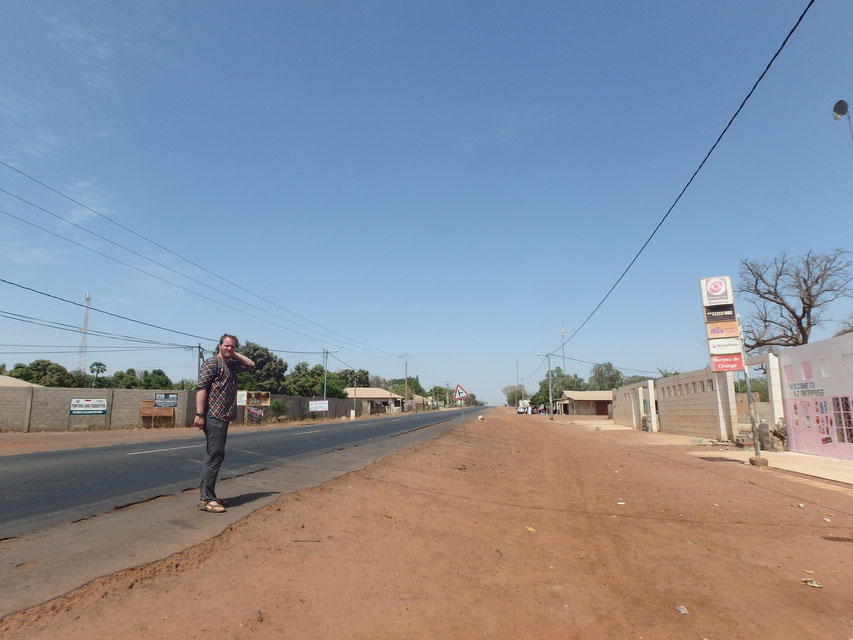
We lingered in Sanyang, nervous of our next step, hiding amongst other tourists we didn't even like to avoid the unknown quantity that was public transport. There is limited information about this sort of travel within The Gambia; no such thing as bus times, numbered stands or labelled destinations. What hints I could find were so vague that I could have assumed them. Unable to delay any further*, we set out early one morning to walk the few dusty kilometres into Sanyang town.
Tumani Tenda - The Gambia
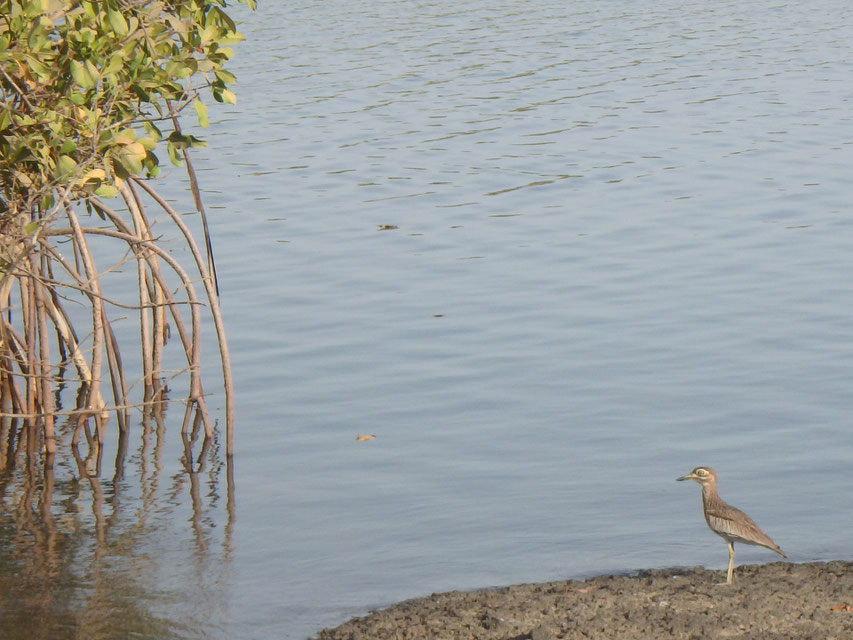
Staying there for nearly a week in the end, I have struggled to put my experience of Tumani Tenda into a digestible format. As is so often the case, the atmosphere was made by the wonderful staff, so I am trying to do them justice.
For learning about life in a Gambian village, about sustainable farming or for bird watching, it's hard to imagine a more ideal set up. The prices are listed upon arrival, so there is no need to haggle and activities are very affordable coming from Europe. Most importantly, any profit made is channelled straight back into the community.
The following information is enough for the basis of a thesis, so I have broken it up into sections. You might just want to look at the photos...
Rainbow Beach Bar and Lodgings, Sanyang - The Gambia
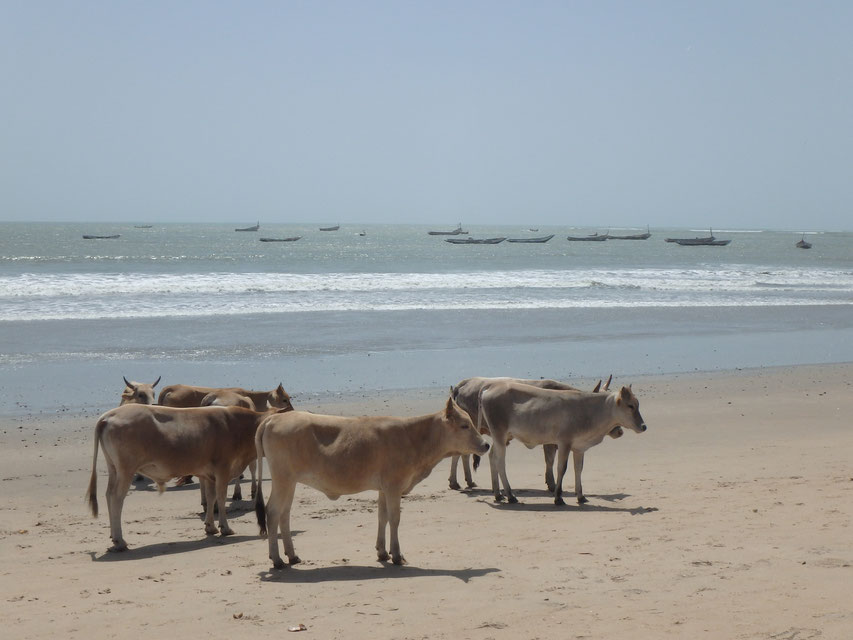
Far from fresh-faced having slept in the airport, but new to The Gambia, we were not looking for a challenge in our first few nights in the country. Avoiding Senegambia, the most popular and notoriously tourist infested strip of beach further north, we found Rainbow Beach Bar and Lodgings by the reliable method of arranging accommodation on booking.com* in order of lowest price first...
*Not an advert!
Waves and Caves in Winter - Gwithian to Perranporth on Cornwall's Coast Path.

Always fond of Cornwall, but never quite sure where to start, I found myself in Portreath with the sole purpose of buying Dan a new bodyboard. That was the beginning of a series of trips we made in the van.* Dan could play in the surf while I hiked the coast path. Gwithian to Perranporth was hardly a grand epic; I began wherever the surf was good, left Dan in the water and walked for a couple of hours to a designated point where he (and Burt) could pick me up again. Along the way were some of the most incredible places I've ever found in England.
I've arranged the segments logically (west to east) for your sanity...
*The now deceased "Burt".
Burnt trees and bumble bees - Spring between Gavião and Belver

I'm writing this in the present tense because I can't sleep. Burt [the van] is broken, but we still don't know if this is the end of the road. Hopefully the mechanic will tell us in the morning and the wait, at least, will be over. On life's scale of problems, this is small fry, but I'm not good at waiting.
This is now our forth night here in Gavião. I spent the first day moping in the room of our guesthouse; it was raining, but I still should have ventured outside. By yesterday I was already stir crazy; irritable and bored. The sun came out, so I walked out of the village, down the main road, round an empty roundabout and out of sight. The roadside trees, plots of tall cabbage and distant barking dogs did me good. This place didn't even know I was there. I floated loosely through reality like Schrödinger's cat, wondering if I might have disappeared.
Malhão - the big fishy beach clean.
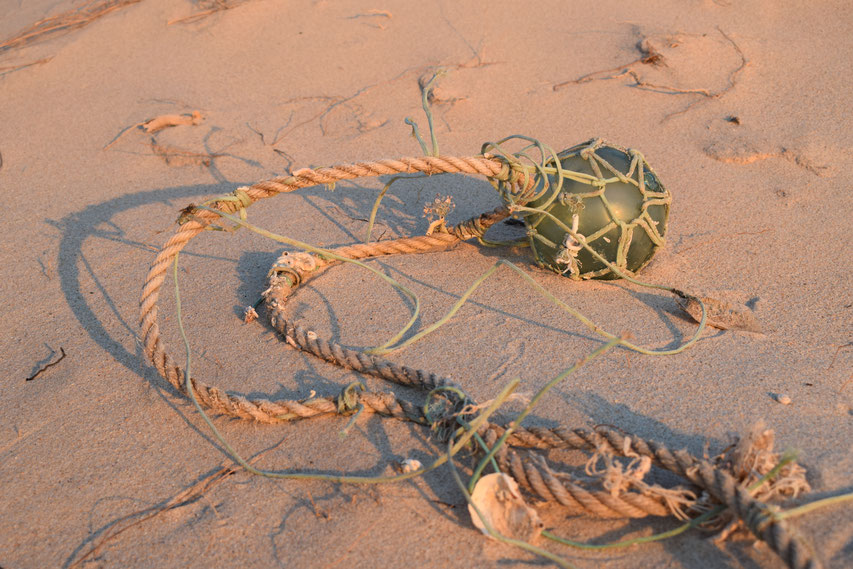
After three weeks of storms and surf, I cruelly dragged Dan away from Sagres. We were going to head north.
Storms, Surf and the Plastic Tide - mostly around Vila do Bispo and Sagres
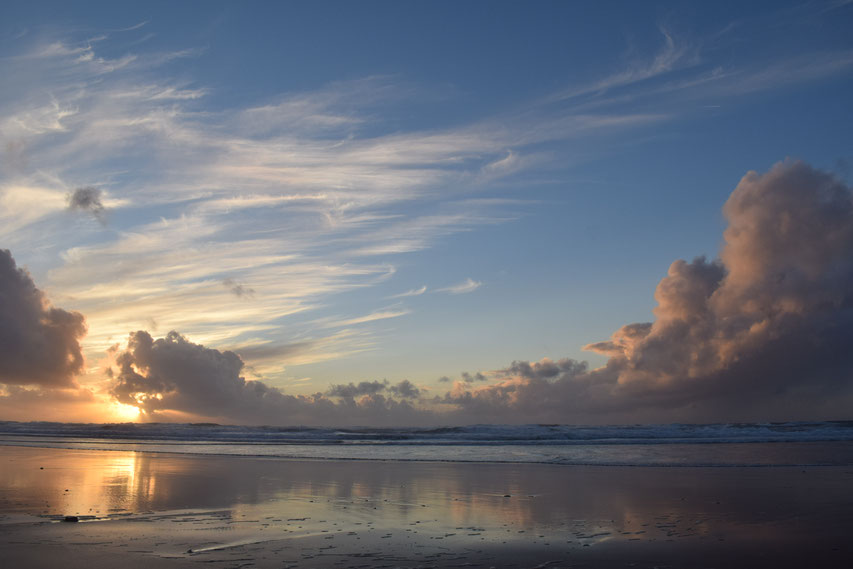
Finally free from the English winter, semi-permeated with grey but not entirely swallowed, I [we] fled south. Snow storms descended on northern Europe, clutching after Burt's* exhaust as he valiantly chugged through France; down past the ancient wood-striped houses south of Le Havre, missing a baby boar on the road and all the way to Basque country without even a drop of rain. In the small village Garmarthe, perched low on Pyrenean slopes, we bought cheese from the loft of a sheep barn; bread from bakeries and vegetables from green-grocers, we were determined not to just be a drain on the places we visited this time.
*Burt is the name of our van.
Skeletons and their Shadows.

Probably aged seven or eight, the first time I came across a stuffed animal I made my Mum hide it behind the sofa, I wouldn't look at the mummy in the Tutankhamun exhibition (Dorchester, not Egypt) and finding a dead sheep on the beach gave me nightmares. More recently I stopped eating meat for all the sensible environmental reasons, but partly also just so I wouldn't have to think about dead things while I chewed anymore; an ancient building full of them shouldn't have held much appeal...
Why you probably shouldn't hike the West Highland Way in December (but I'm glad we tried anyway).
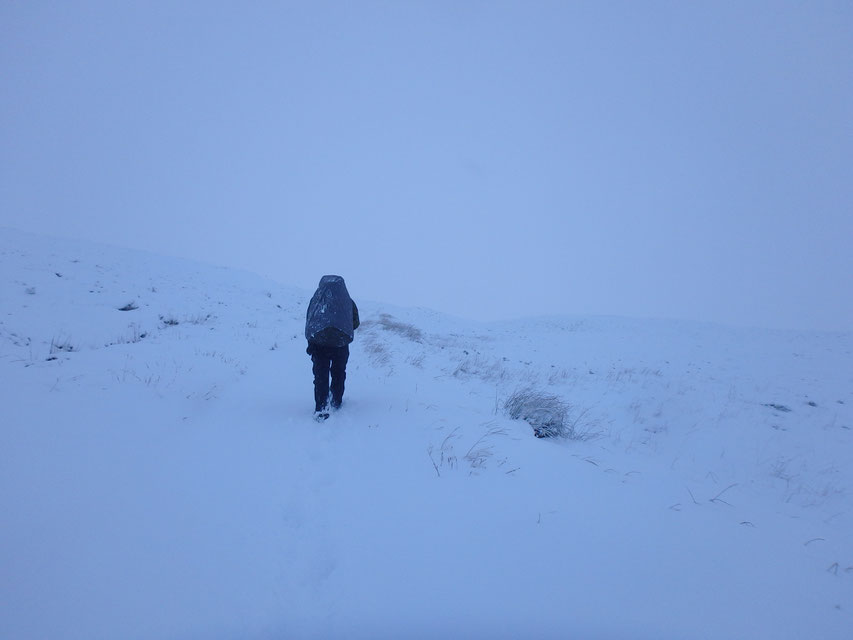
Wind and snow up Harter Fell, the Lake District.
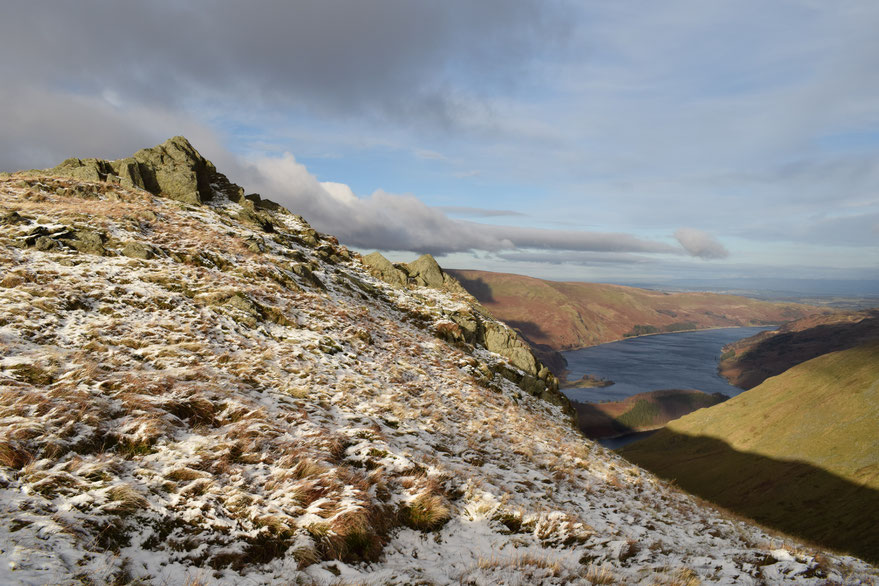
Despite visiting the Lake District three times on our winding ways up and down from Scotland in the van, I had never walked further into the wild than the banks of Haweswater Reservoir.
Completing the circle - þórsmörk.
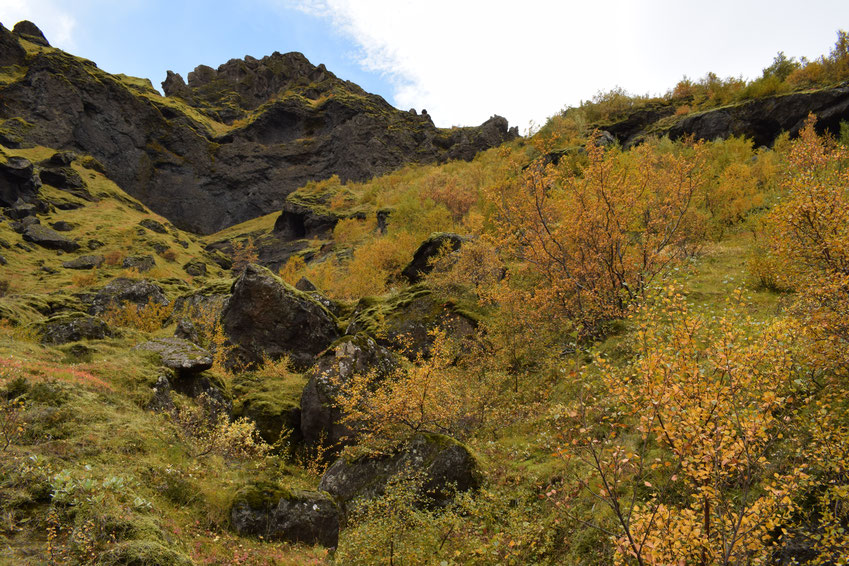
It had been five months since we first arrived in þórsmörk. There was nobody there then either; it was a privilege. There were swathes of snow in May, some filling gullies and plenty on the mountain tops. We had it on our tents at one point. The spring flowers, a scattering of yellow and purple, have come and long since fallen to the ground. The birch was golden when we came back, and lime green in parts; yellow leaves decorating the paths.
Photographer Jason Wallien - living and working in Beijing.
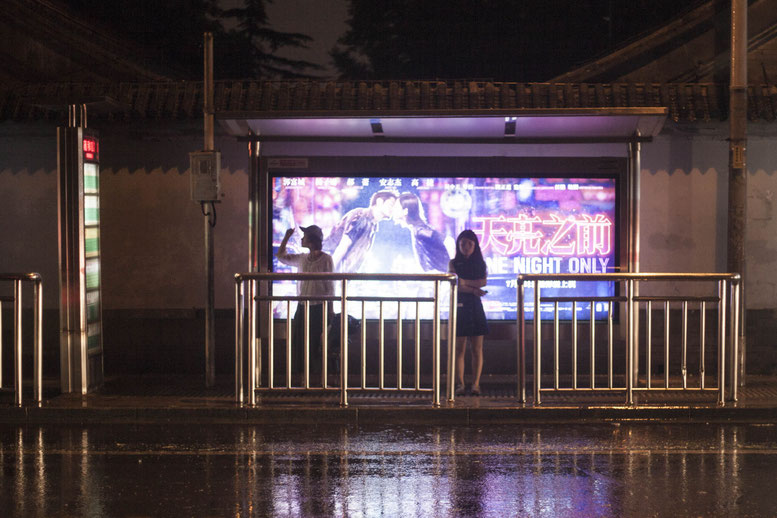
Jason has been living in China for almost as long as I've known him. I don't think he intended to be there for so long, but something about Beijing has obviously reeled him in. I first asked him if he would do an interview for me, about his life there and photography, on the 3rd of January 2015; between the two of us, we have managed to string it out until now... I think it was worth the wait. I particularly love his photos of lights and rain in the darkness and for me, his answers are a rare insight into a idea I once considered for myself. We cannot be everywhere and do everything in the same lifetime, so it's good when our friends can be some places for us. I hope you enjoy the read.
Falling for Fjallabak.
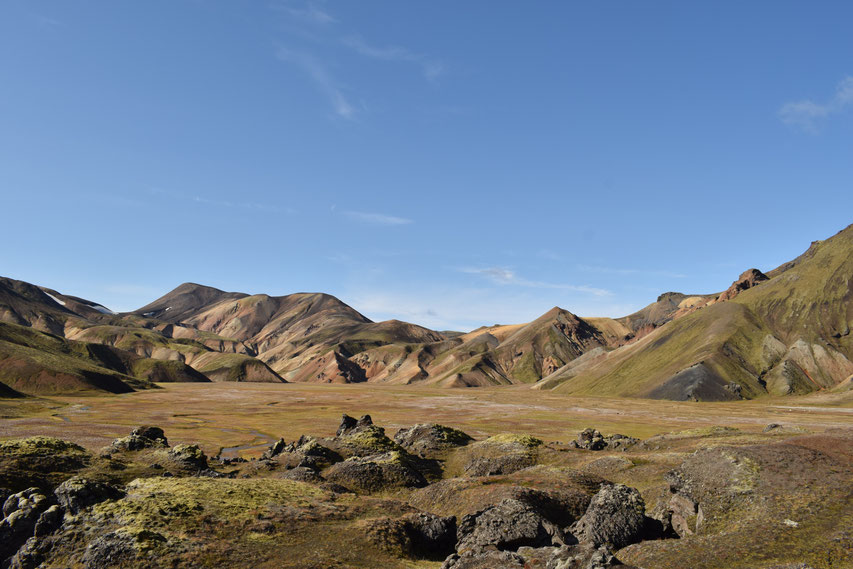
We have been working in the huts and campsites along the Laugavegur since July. More and more so, I am drowning in uncertainty as I try to cobble this together. It's taken me weeks just to whittle down the photos. The most colourful are attractive, but I don't want to give you the impression that it's always sunny here; sometimes we don't see blue sky for a week.
This three word title... the alliteration I like, but regardless of the shortening days it was not intended as a pun on the American term for Autumn. Despite our mother tongue becoming the most wide-spread "global language", the English are still paranoid about loosing it. Living and working here in Iceland, the irony is tangible. This is about Fjallabak; I can barely even pronounce it.
100 days of sunlight - Þórsmörk, Goðaland and Fjallabak.

This is dedicated to all the people who helped form this unbelievable summer. Thank-you for sharing this small/enormous part of Iceland with me; I couldn't have imagined it would be this magical.
Serra do Geres (northmost Portugal), Galicia and all the way to Calais.

It's been several months since we lived in our van "Burt" and I still haven't finished the story. Though I can easily pick holes in places I was not that keen on or point out the most beautiful part of an otherwise average location, it rips at my heart strings to fail in describing a place I really loved. There is plenty of "average" in this final account, but my memories of Galicia are too special to be faithful to.
As a further avoidance tactic, I will begin by telling you about the North of Portugal and the van itself...
Burt was sick. He squealed and spluttered into life each morning, making a noise which sounded like a loose fan belt, but maybe not quite. As the wooring noise seemed to go silent after a couple of minutes, we ignored it for two days...
The Wind Turbines (high on too much time to think)
My notes say "near Afonsim? between Vila Pouca de Aguiar & Ribeira da Pena".
Walking towards the brow of the hill, I contemplated that although I like wind turbines, they seemed alien here. The last village we'd driven through had been half derelict, some newer buildings, but mostly old stone constructions, huge square bricks that reminded me of the Incas, but weren't quite as easily tessellated. People had stared at us as they often seem to, but it wasn't Burt, there were lots of old Hyundii H100s around Portugal. Sometimes they had open mouths or frowns, and we were starting to feel a bit self-conscious.
The blob rocks and the lucky swastika- Portugal
I'll quickly hop you through some of our more attractive one night stops before we get to one of Portugal's crowning jewels - the Serra de Estrela, some great archaeology and a magical spot by a frog filled river.
After Nazaré, we spent a final night with the waves beside the lighthouse at Praia Velha, São Pedro de Moel, before heading further north.
Artist Hannah Simpson - finding the inspiration in daily life.

When I first met Hannah, I was already a bit of a mess. For months, we lived in a muddy industrial estate, slipping past each-other like grinning ships in the night.
"Hello!"
"Good Morning!"
"How are you?!"
"Fine!"
"Fine?!"
"Fine!"
*manic laughter*
Both of us were in our twenties, trying somehow to manage teams of volunteers in the never ending battle
to provide aid and a little more dignity to the inhabitants of the now-demolished "Jungle" refugee camp. Whereas I was mostly a deranged clothing and bedding woman, Hannah worked in "Calais Kitchens". This home-grown set up provided tinned food, ingredients and a degree of independence to the whole camp. They were inspirational as an organisation and Hannah's smiling, approachable demeanour appeared to surround her as a bubble of calm (whatever she might have been feeling like inside).
Though I could probably dedicate this blog to the creativity of Calais volunteers for the rest of the decade, I've been particularly struck by Hannah's style. She will not appreciate the comparison to Picasso and I have never made such a leap before without implying that someone was meaning to imitate his work; she isn't. The level of energy she exudes in her drawings make it obvious that this is purely her. I'm a little in awe.
Surf and Turf (the more literal, vegetarian variety) -Southern Portugal
This is a bitty sort of story, partially filled with a combination of places I didn't really like that much and their best bits. I saw the biggest waves of my life, nearly fell to my death
off a Roman aqueduct and got eaten alive by mosquitoes. Enjoy...
After the best part of a week, the rain descended on Sagres and we fled up the coast. There are
many more dramatic cliffs and windswept beaches past Bordeira and further north, but we didn't venture out for more than five minutes at a time, my hair blown horizontal, until the sun came out
two days later. In the interim, we slept on the cliffs beside Monte Clérigo; I hadn't felt so buffeted since being in a storm under canvas and cooking was more or less impossible.
Artist Helen Lucy Wyatt on painty massages, empathy and living in Bristol.
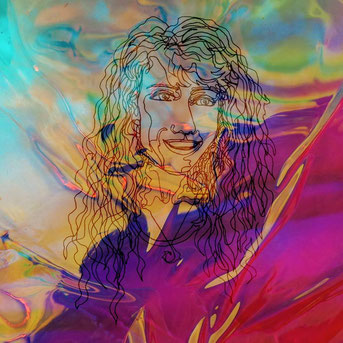
Only ever spending any time together at busy music festivals and other people's parties, it took me almost a year to learn about this part of Helen's life.
Often secret talents turn out to be infinity more rewarding once discovered than those you've been hearing too much about - Helen's designs and illustrations are addictive. Sometimes using computer manipulation as well as more traditional techniques, I usually have no idea how she has created a finished piece, but that only adds to the intrigue.
Six pristine beaches around Sagres, Portugal.
The main intention of this haphazard adventure was always to delve into Portugal, though I would have been surprised to find out that we'd enter from the South. Passing the most built up stretch of the Algarve in the rain, we bee-lined towards Sagres on the promise of surf.
March is a good time for waves, but attracts far less ordinary holiday makers. Though relatively quiet and very easy to park up our van at this time of year, I think you would have to be more careful in the Summer.
Countless vultures, a few waves and a very long tunnel (South/West Spain).
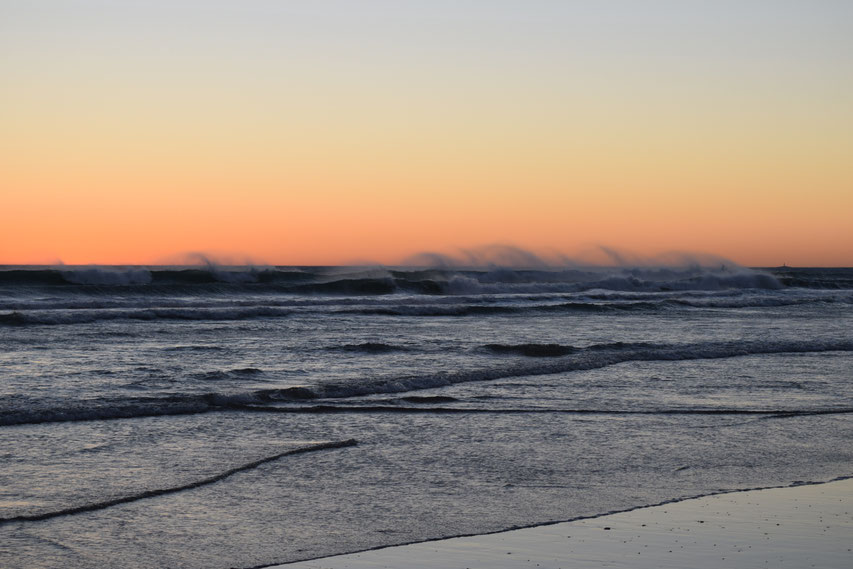
South from Ubrique, towards Alcalá de los Gazules, we drove an hour or so along small roads, though idyllic forested mountains, only persisting because every turn off was marked clearly as private land. For once our severely unspecific road map was correct in assuring us that there were no real settlements here, but under a mountain we found another "area recreativa". Somewhat of a labyrinth, "El Picacho" had barbecues cut into large boulders, picnic tables fashioned from giant hunks of wood and the generally overgrown delightful air of not having been visited much since last summer. The tree branches crooked above us like ancient witches fingers and we hid under the bridge, as the odd car passed above, like grubby trolls bathing in the river.
Several Spanish Sierras
By now we thought we were getting a little better at travelling in the van. We were driving in little hops, poking into the countryside or along the coast for an hour or two each day, never waiting until after sunset to find somewhere to sleep. Water was easy enough to find from taps in children's play parks, fontes or town centres, fuel was cheaper in Spain and we knew just about Spanish to make our lives a little easier. Slowly but surely our body clocks began to adapt from a slovenly 11am until after midnight norm, to one which made better use of the light. With little to do in the evenings, we were sleeping before the majority of eight-year-olds and I often woke up just before dawn started to scratch through the curtains. We appeared to have escaped the winter.
The river Ebro & its tributaries, the Spanish Civil War and alternative uses for shoelaces.
Had it not been for the gloom, I would have liked to stay beside Pantà de Rialb longer in the eerie silence, but we chased the promise of sunshine South. Skirting around Lleida, we followed a succession of steadily diminishing roads, looking for a blank spot on the map, as if paddling upstream to the source.
Pantà de Rialb and the lost villages.
The sky was stubbornly overcast as we approached the lake. Though with all the elements of beauty; reflections of leafy trees onto the green water's surface, rocky outcrops and a silencing distance from the highway, we couldn't shake the feeling that it was a little bit too quiet down this rough track. On the map, these roads lead to nowhere. I possibly expected a picnic site or somebodies house at the point where on paper it descended to the bank in two directions, but instead we got to a sign, "PELIGRO INUNDACIONES", and it simply became impassable in the van; great hollows and troughs down a steep slope.
On foot the road disintegrates into mud clots, completely disappearing and being replaced by shrubby bushes and rocks. What at first appeared to be a chimney poking out of a small clump of trees, turned out on closer inspection to be an empty shrine, simply a window to and from nowhere without the Mary doll to stand in it. We followed a faint and precarious pathway, still twenty-five meters above the water level, around a small headland and confusingly emerged onto the remains of a two direction tarmac road; only slightly faded white lines in the centre, but edges crumbling into emptiness. Over a sinking bridge, once proud enough for an archway, metal barriers meant to protect impossible traffic, bent towards the water like discarded staples. Sloped into a disturbing width ways diagonal, as well as the simple down-hill gradient, the road plunged into the water and obscurity.
France: a journey of three seasons and several lakes.
The morning of our intended departure from Morgins, Dan discovered that we (he) had left the head-lights on all night. Burt was in a coma. The oldest vehicle in the village by a good fifteen years you can imagine the spectacle we made heaving the van to the top of an icy hill and then charging down again with only the hand-brake to rely on. The slope out of the car park wasn't enough, but the only remaining gradient was right down through the middle of the village, road lined with kit laden skiers and troops of school trip children. A kind old man helped me get up some momentum and we watched as Dan hurtled a good hundred meters before bellowing out a puff of smoke. I hadn't been keen to be in the drivers seat...
Take two, step one - grazing through six countries.
If you've been dropping by for some time, you probably remember a little hype around last June. We'd saved and stagnated for over a year in Exeter. Unexpectedly, I'd found many things to love in that sleepy South-Western city; a small but solid medley of people, plenty of camping on Dartmoor and Devon's coast. Still, I was restless, we were gearing up for a great adventure. Burt the carpet van spluttered into our lives as a kind of tiny home on wheels, a fortified tent with space for a duvet, and we finally set of on our epic European road trip. Though the weather was better, things started that month the same as we just have, with a trip up to Scotland. As you might also know, that first drive up North and down was our last great road trip of 2016. We finished the year in Calais, laughing and crying and forgetting to shower. We're starting that original plan from scratch.
Why and how we should be trying to preserve our Oceans.

Having spent quite some time ranting about the refugee crisis, I wanted to write about something else close to my heart, incredibly
important, but not yet personal enough to make me shake with rage.
Covering almost three-quarters of the Earth, holding 97% of our water, producing almost half of our oxygen and absorbing carbon from the atmosphere, I can't exactly overstate how important oceans
are to our planet's survival. Despite being vital to our economies and way of life, gone are the days when it was possible to believe the deep blue sea was simultaneously an infinite wealth
of resources and an invulnerable dumping ground.
2016, thanks...
For the irritable lefties amongst us, those not fans of bombs or anyone who'd rather not think about thousands of people drowning off the coasts of their favourite holiday destinations in pursuit of a better life, 2016 hasn't exactly been the new page of peace and opportunity we'd been hoping for. Maybe every year is the same if you mull upon it in the right way for long enough, but somehow this one doesn't feel like anything I can round up in a listicle.

Christmas Camping
Anything I write or do now seems trivial and trite compared to what's been on my radar the last half of this year. I've almost forgotten how I used to write about beautiful things, but here we go...
Trying to be a human after Calais.
In the end, we spent five months in Calais; stretching over nearly half of 2016, it went by in somewhere between a flash and a lifetime. Days were over before they'd begun, but the weeks dragged out endlessly. Now that we're out, it feels like waking from a bizarre hallucination.

The Jungle is finished, but we haven't quite...
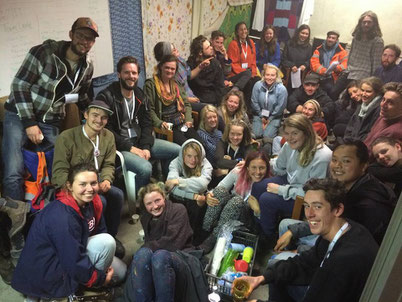
For months the "Jungle" was our entire existence; warehouse, jungle, warehouse, jungle, lidl, warehouse, junglejunglejungle...
We lived and breathed it until there was little left of our previous selves, but then they were taken away. We have no idea what has happened to the vast majority of the people we saw every day.
Exhausted and lacking direction, most of us left. It seemed like our work was done, but Dan and I faffed, tying up "loose ends" and fitting
new brake disks to our long immobile van. After the children were finally gone, I languished around the yard for the best part of a week, occasionally attempting a little clothes sorting or answering the questions of new volunteers with dead eyes and monotone half sentences.
What were we doing?
The fate of the "Jungle" Bambinos.
I'd gone from taking clothing and shoes to almost exclusively adult men and older teenagers, to spending all of my time trying to care for children. Frankly I had no idea what I was doing and neither did 90% of us. We tried to occupy them with football and games in a field next door, but spent most of the day and evening listening to their problems and trying to make sure they have working phones before they disappeared. They were growing boys and hungry however much we try to feed them, there was no running water inside the containers and many told me that they washed their faces in the water from the toilets. Helplessly I worried for their teeth.
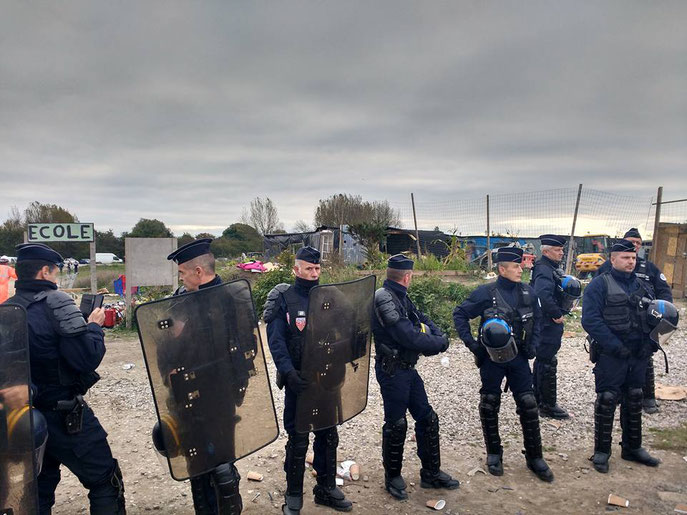
Disconnected stabs of consciousness from Calais.
I've written very little about Calais over the last three months I've been here. There is so much to say and yet none of it forms in my head into a coherent narrative, message or anything even close to a solution. The jungle is finished, but I still feel like I have so much to learn. I never took any photos, I never said my goodbyes, all lost threads from a tapestry of unsolved problems.
Jungle halas.
The impossible task we've been attempting is drawing to a close and I feel both absolved of responsibility and drowned in sorrow about the people we've had to leave behind. I'm not allowed in anymore and am suddenly redundant. Strings of half made thoughts race around my brain; jobs I never got around to, referrals lost in the depths of my phone.

Uncertainty in Calais...
Time melts on as if it has no meaning. The rumours are rife- "Jungle finish?" we're asked each day. Nobody wants it to be here but they (and we) are constantly anxious about what that means. Nobody wants another eviction, we can't loose any more children in the process, but there's no way we can sustain over 10,000 people over the Winter without being allowed to build more solid homes. We live day by day, maintaining their existence, providing clothes, food and some sort of shelter, but it's not getting better. In over two months, I've taken a few days to myself, but there are others who've been at it since Christmas.

"Converting" the carpet van for under £200.

Searching for a van was a mundane daily hell...
It took us months. We were looking for something that didn’t have a massive amount of miles (many under £2000 had around 200,000 on the clock), with no major mechanical problems and that wasn’t too big. More importantly, it still had to be long enough for Dan (who’s 6’4) to lie down in.
Having never owned a car before, we took vital and occasionally contradictory advise from the internet and other more experienced family and friends. Dan’s dad (Rod) came along to view and test dive any potential options and we listened to the advice of a friend's trusted mechanic before we finally took the plunge*. Our budget was £1500 and eventually, after many false starts, we eventually spent £1150 on a Hyundii H100 from 1997, an old carpet fitter's van, and £350 on repairs and a new MOT.
Deciding what to do with it next and getting materials...
- Dan read many blogs and other advice online to give us ideas on how to convert a van cheaply, treat rust and generally maintain cars as we were previously clueless.
- We kept a look out for sources of free material and hit gold outside a laminate workshop where we found (with permission) lots of off-cuts of kitchen splash board, MDF and wooden pallets. Rod also gave us some plastic political placards (who’s party will remain unnamed…) which were going to be thrown away.
- We used Gumtree and searched other similar second-hand sites to find a jigsaw, foam mattress, camping chairs.
- To treat the rust we bought Kurust (phosphoric acid), wire brushes, rust inhibiting paint, fiberglass sheets, resin and a premixed tub of fiberglass mush.
- We also bought uniform lumber to create frames for our cupboards and bed, several tubes of grip adhesive, some extra screws and insulation fluff made from recycled plastic bottles**.
- Luckily Dan and his parents had quite a good collection of tools and paint.
Before we could begin, we spent a day dismantling and removing the ugly carpeted wooden platform and shelving from the back of the van, removed the mouldy panels from the walls and cleaned the van inside and out.
Some time on Islay, Scotland and the carpet van makes it to France.

After a very slow and somewhat arduous trip up to Swansea, Wales the week before, we were particularly relieved to make it up to Scotland in relatively good time without any major mishaps.
In between fixing rusty holes in the van, changing our oil (and spilling a whole tank full onto my parents’ drive) and generally trying to sort ourselves out a bit better before leaving the UK, we found a little time for the beach...
...and we're off! The beginnings of life in a carpet van.
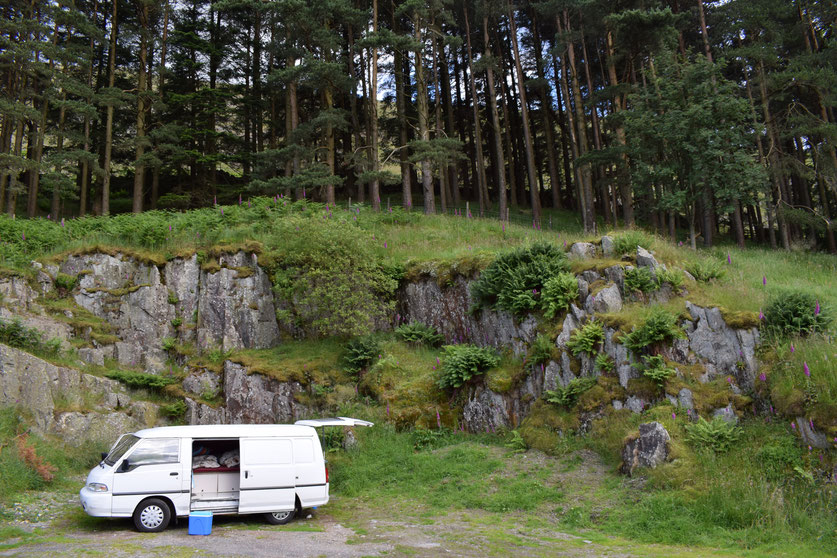
Having got to know each other over long, stressful nights in the library, the least organised History students in our year, it's hardly surprising that Dan and I struggle to get ourselves together before a (hopefully) long trip. Despite slogging and saving for over a year in preparation, we found ourselves committed to leaving our jobs forever in two weeks time, with no van to move into, half a flat full of things and Dan still learning to drive.
Storms, sea shells and sand boarding in Mui Ne, Vietnam.
After over a year's waiting and saving, I'm soon setting off on another adventure. I couldn't be much further from travel burn out right now, but somehow this sprung to mind...
Trying to loop through the North of Thailand, floating along a portion of the Mekong, through Laos and down the entire length of skinny Vietnam in just a few weeks, had turned into somewhat of an ordeal. Vietnam is a beautiful country, with some of the most impressive sights in South East Asia, but after spending around one hundred hours trying to sleep on hard train benches, sweating on endless busses, occasionally getting shoved and ordered around by unfriendly men and fighting off moto drivers, the continuous traffic noise and incessant beeping was beginning to grate.
Illustrator Laura Wilson on art, feminism and the odd mermaid.

Floating around the restaurant with an enviable aura of calm, Laura never seemed repressed by the sometimes stiflingly misogynistic atmosphere of our work place half a decade ago. After her smile, I first noticed her tattoos- a tall ship, mermaids and an intricately twined circle on her back. Getting to know her a little better, I learnt she designed them herself. I've been in awe ever since and could not be more excited to introduce you. This is Laura Wilson.
Were you artistic as a child? How did you get into illustration?
I wanted to be an artist from a really early age! Art was my favourite subject at school from when I was very young, and it was something I’d spend hours each evening doing. I drew an awful lot of mermaids! I had a few years during my teens when I gave into the ‘art isn’t a viable career option’ rhetoric that sensible adults were telling me, but eventually I decided that following my passion was worth not being as financially stable as I might be if I chose a different career path!
Hitchhiking, camping and other less advisable adventures on the island of Milos, Greece.

One cold, soggy winter in Southampton we were dreaming of an adventure.
My friend Bryony and I had been struggling to find any inspiration in our grimy university accommodation and imagined spending long days painting on quiet beaches; I bought a map of the Cyclades and we began to highlight dots to aim for.
Milos was so beautiful that our island hopping adventure didn't end up as extensive as we imagined, but I haven't regretted it for a second.
Five ways in which I'm still stubbornly refusing to join the 21st century.
As a child I used to take my Mum’s accusations of stubbornness as a compliment. Without the thought process to understand that my 4, 7, 16 year old self might benefit from a little open-mindedness, I believed it insinuated I had some sort of unbreakable iron will; the sort of perseverance that a suffragette would have needed on hunger-strike or what made Rosa Parks stay on that seat. Not yet appreciating that the vast majority of the human race believe themselves to be right at all times, I imagined that this sort of attitude would eventually result in justice.
Having absorbed enough contradictory information over the last decade to understand that there is rarely a reliable answer to anything, I'm more confused by the world than ever, but can't help retaining a trace of that original pigheadedness. A mystery to the most of my friends, these are a few quirks that I am for some reason trying to swim with against the tide of the 21st century (and maybe adulthood?).

Dan's birthday on Dartmoor.
I've been rotting indoors for months as we "prepare" for an as-of-yet unspecific adventure elsewhere in Europe. I bounce resigned from one box to another, staring between screens and sitting so badly; my back is aching. Wild camping for Dan's birthday has become somewhat of a tradition and as the weather is starting the clear up again, we ventured out to Dartmoor to absorb some wilderness as an antidote.
Tips for women planning an adventure in Morocco.
Drunkenly booking myself a one-way ticket to Marrakesh, age 20, was undoubtedly one of the most impulsive decisions I've ever made. I had some idea of what Morocco might be like, but the more I researched solo-female travel there, the more I began to wonder if I had made a giant mistake. As the weeks before my departure flew by, I got increasingly nervous and tried to arm myself with as much information as possible.
In hindsight I had no reason to worry, but these are the tips I wish I'd read before I left...
How to survive an English music festival.
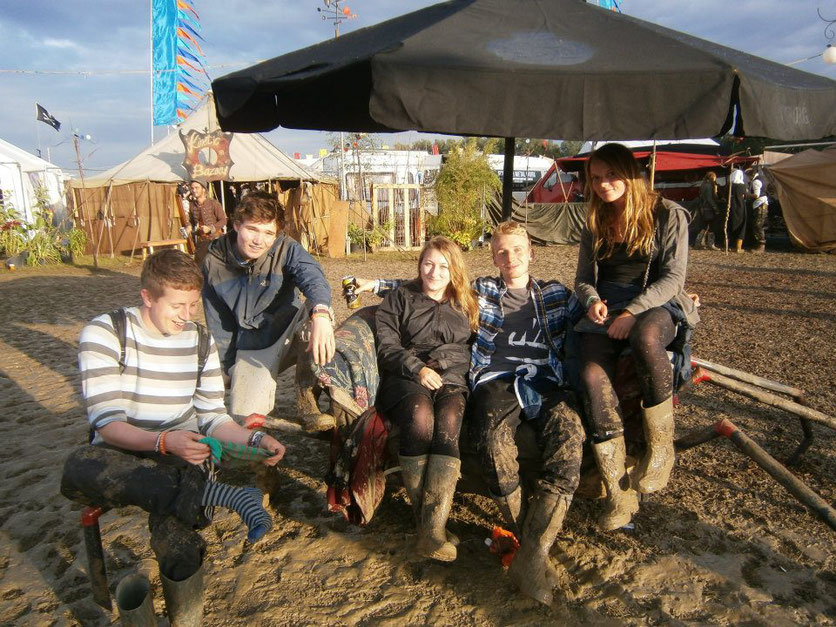
Mention you're from England to any continental European and after mocking you for your cooking, they will most likely mention the weather. Although our continuous drizzle is often exaggerated, several days of downpour have the potential to make life very miserable if you're sleeping in a tent. After several summers of English music festivals, these are my tips for embracing the mud and enjoying the party regardless...
Architectural details of Vienna, Austria.

"Building" in the new Dunkirk refugee camp, France.
After two weeks of stumbling through our daily reality, Dan and I were struggling to find any purpose. Stretching the Easter bank holiday weekend, we found lifts over to Calais and were quickly back in the build team. With its regimented streets of chicken coops, Dunkirk couldn't be any more different to "the jungle". Having never seen the old camp, I can only repeat other volunteers' stories of children trying to play in a wood turned swamp. No building materials or tents had been allowed in for months and Winter conditions must have been nearly impossible before the move.
Overshadowed by the jungle, Dunkirk was just one of many forgotten refugee camps in Europe. I'm struggling not to get too political, but the new camp, set up by MSF and volunteers, at least gives a small amount of dignity back to the thousand and a half people it has space to shelter. There are toilet facilities, showers, somewhere to wash clothes and food distributions from the other charities involved. It hasn't solved their long term problems, but hopefully eased a bit of suffering in the mean time.
Camping spots that make you wonder why we ever sleep indoors.
This collaboration of magical camping spots has taken an embarrassingly long time to put together, but I can't help but feel proud of the result. With some of my traveller idols, friends and even family involved, it's hard to decide if I'm more excited by the contributors or the places they have written about. If this doesn't persuade you that you don't always want to sleep with a roof over your head, then I'm happy to keep the wilderness for myself.
Volunteering for l'Auberge des Migrants in the Calais "Jungle"
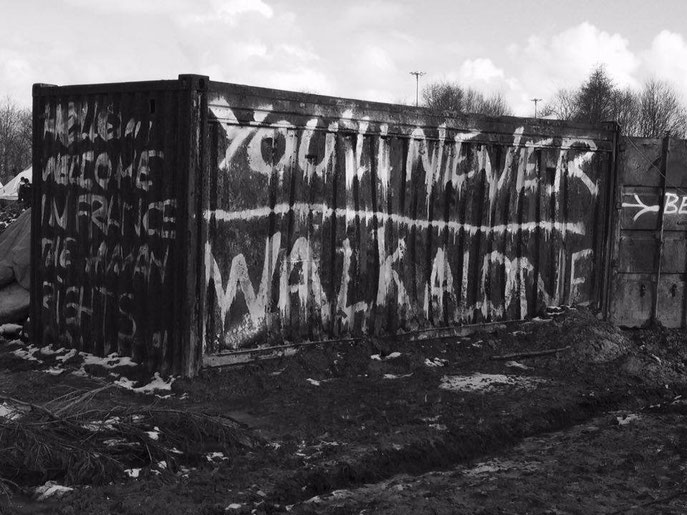
*If you haven't got time or energy to read my waffle and are simply interested in the logistics of
volunteering, slide right down to the bottom and read the useful information section.*
**These photos are borrowed from the friends I met in Calais. Thank-you in advance.**
I'm struggling to find the tone of this article; shying away from self-congratulatory or callous, and after only a week there acutely aware of my naivety. On leaving, nearly everything in my normal life seems pointless and yet I still bumble along as if before.
I've been wanting to help the people stuck at Calais since early last year, but excuses tumbled over each-other and it wasn't until last week that we finally sorted ourselves out enough to spend a little time around "the jungle"*.
*The name made me uncomfortable before we went out, but since meeting a few of the refugees, I begin to think of it as a dark in-joke between those who've been forced to live in a situation that many of us wouldn't wish on our pets.
Artist Louis Masai on the environment, music and travel.

Trundling along on the megabus, somewhere between Bristol and London, I only started talking to Louis Masai after we broke down. Far from the usual delays, we were entertained by a teenage dance troupe and previously unconnected folk band who just happened to be travelling back from Plymouth together. I felt the hour slip by with little resentment and only once back on the bus realised how close I was coming to missing my connections to Vienna that night. Ice broken by the bizarre situation, I began to learn a little about Louis' work. After nearly a year of following him on social media, I recently decided to ask him for an interview. This is what I learnt...
Panama- a budget travel guide by Jess Signet.
I've never had a guest post on FeatheryTravels before so this is new for me, but when Jess offered to write me a guide to Panama I thought some of you might find it useful. She seems as genuine and down to earth as I try to be here and I think her advice will be invaluable for anyone heading that direction "on a shoestring" in the future...
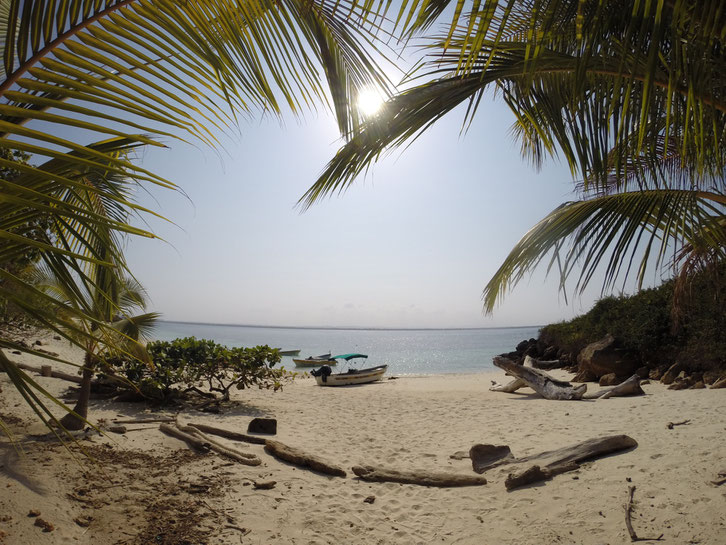
An interview with artist Olivier Leger.
After discovering his impossibly detailed pen and ink drawings, doodles I could get lost in for hours, I'm incredibly excited to introduce Olivier. His intricate layers of disproportionately sized wildlife weave together into the masterpieces you can see below. Though this website is never going to do his pictures justice, the playful twist on an environmental theme seemed perfect. I'll hope you'll enjoy getting to know the artist a little better as much as I have.
Thirteen great reasons to visit Gozo this Spring- Malta.
Something I wrote this time last year...
As the second time our family had ever gone abroad together, my Mum chose well with Gozo. Visiting in the Spring, it was warm (but not roasting!), the flowers were blooming and most
importantly for the Featherstones, we almost had the beaches to ourselves.
Gozo is one of the Maltese Islands, little dots in the Mediterranean between Italy and Libya...
Festival Fact File: Secret Garden Party
Approaching the end of July, somewhere in the countryside near Cambridge, England, an otherwise sleepy patch of farm land transforms into the Secret Garden Party. Stages hatch out from the fields, gigantic circus tents are pitched in clusters and psychedelic bunting stretches overhead. People abandon their mundane lives for a few days to loose themselves down the metaphorical rabbit hole.
Why we shouldn't pretend that everybody can just quit their jobs and travel...
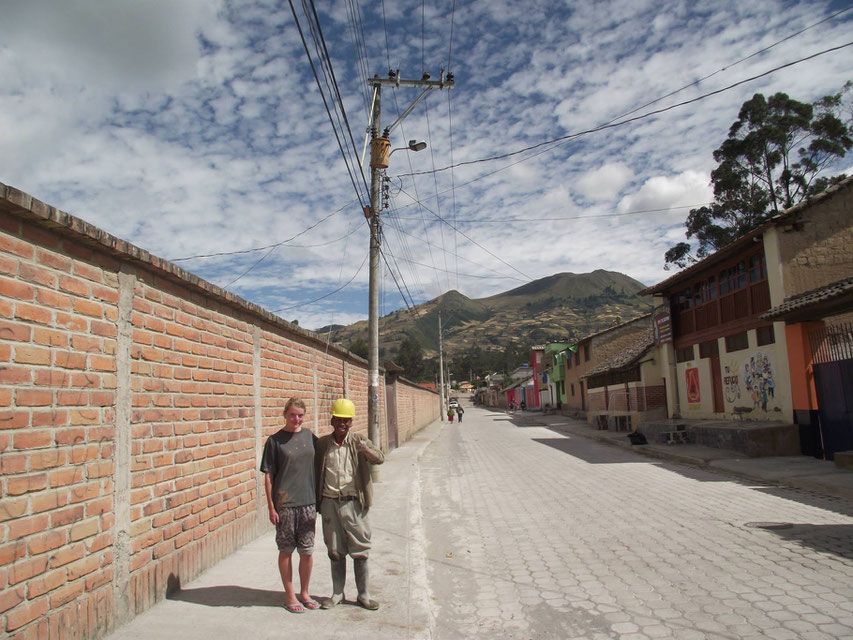
Maybe I'm just feeling bitter because I can't travel right now and maybe this article will be a little controversial, but I feel that among the chorus of bloggers telling people to give up their mundane lives and see the world, we've neglected to acknowledge our own privilege. Although many of us work hard for the freedom to travel, it's impossible to pretend that our opportunities are open to everyone...
Christmas on Islay.
Dan and I have spent the last two Christmases far away. Firstly in Australia back in 2013 and then somewhere in a Bolivian forest last year. This year we made the journey up to Scotland, narrowly dodged the UK's December storms and squeezed onto one of the few remaining ferries that made the crossing to the island.
Ottery St Mary Tar Barrels (weird and wonderful things to do if you find yourself in Exeter- part 4).
Before experiencing Ottery St Mary's unique Guy Fawkes celebration, I couldn't have imagined such an event could possibly have survived Britain's nanny state long enough to pass on its legacy. For a first-timer the spectacle is confusing; the village is flooded with spectators, after the enthusiastic locals, a crowd of primarily drunken young people from the surrounding area. The mood is impatient as we strain our necks in anticipation, until a plume of smoke and roaring flames give away the tar barrel's spot. This quietness is the tell tale calm. As the barrel comes up above shoulder height, the furnace seems to mill about in the distance for an eternity. Is this what we've come to see?
Let your mind drift for a moment however and you're likely to find yourself alone in the dragon's pathway...
Weird and wonderful things to do if you find yourself in Exeter- part 3.
In the third part of my intermittent mismatch of a series, weird and wonderful things to do if you find yourself in Exeter, I'm looking at a couple of ideas for the city and some beautiful places further afield. With the weather drawing in for Winter, it seems even more important to make the most of those last flecks of sunshine. I've tried to keep outside as much as possible...
Finding our green fingers in Langkawi, Malaysia.
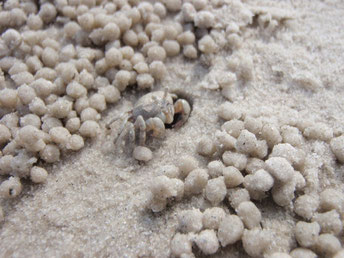
Langkawi is actually a string of over a hundred islands not too far off the North-West coast of Malaysia. We only visited the largest of them, Langkawi itself, but with long, sandy beaches,
jungle coated mountains and a rich variety of wildlife, it had everything I'd hoped for in a tropical paradise without the fringing of lobster sunbathers.
Although the coastline is stunning, we spent the majority of our time exploring the island's green interior.
Boomtown: still the UK's maddest city, just a little bit bigger...
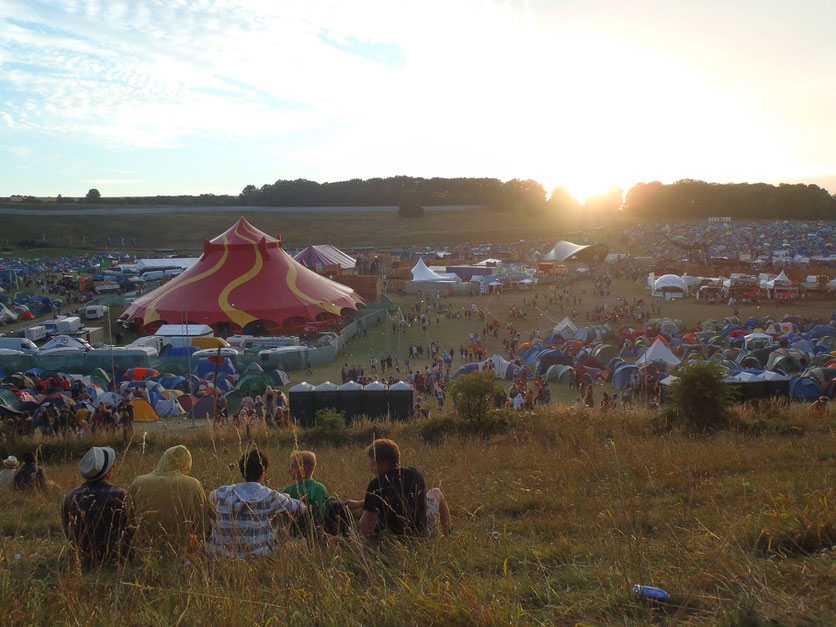

Three years ago my weirdo friends and I experienced Boomtown Fair in it's relative infancy. Ramshackle constructions lined the streets as hoards of wide-eyed inhabitants bumbled around in a mixture of wonder and confusion.
The gigantic spider Arcadia was our focal point. Grown from recycled metal, it had flaming acrobats twirling from its legs and heavy drum and bass bursting from its chest. We were mesmerised.
Two of my many dodgy Arcadia photos from 2012...
Backpacker highlights of Australia's East Coast...
English speaking, easy to get around and lined with long, sandy beaches, Australia's East Coast is perfect for inexperienced travellers. The distances should never be underestimated, but buses are simple and for the slightly more confident, it's perfectly possible to hitchhike. Big hostels often attract a young, party crowd though older travellers can always find smaller, independent accommodation or even better camp.
This post will focus on some of the East Coast's islands and backpacker highlights that I loved on my first trip to that side of the world. If you're trying to plan a gap year, this should be perfect for you. Hopefully, more experienced travellers will also appreciate the stunning coastal scenery, brilliant snorkelling opportunities and unique wildlife.
D7606 on street art.
With its hidden meanings, revolutionary techniques and pieces that you just "might not get", the art world can sometimes seem pretentious. Although street-art is a different scene, I'd always assumed the artists would think themselves a little too cool to talk to me. That was until D7606 commented on my blog to thank me for featuring his work. I was so excited to be directly contacted by him. His crayola coloured pop-art paste ups brighten the grimy walls they adorn in such a fun way, that I wondered where he was coming from. Here's a little insight into his world...
Bumbling through central Bolivia- crazy cities and very many monkeys.
I've been putting off writing this for months...
My last post from Bolivia? The last post from South America and the eight month adventure that Dan and I drew out for as long as physically possible. We had to fly back at the beginning of this year- it's already April, but I still can't quite get over it!
Anyway... the post is entitled "bumbling" as by this stage in the journey we had extremely dwindling funds and really no idea what we were going to do for another two months. Not everywhere we went I could recommend, but I'll share all the information in case you find yourself in a similar situation. Otherwise just sit back and enjoy the monkeys.
Dangers, disasters and dodgy situations in Peru and how to avoid them.
Peru is an incredible country with culture and wildlife as varied as the landscape. A mountainous spine teeming with archaeological sites and home to many proud indigenous communities divides the land between the desert like coast line and the Amazon.
With the fastest growing level of tourism in South America, increasing a whopping 25% annually* and now taking its place as Peru's third largest industry, you could be forgiven for thinking there is safety in numbers. Maccu Pichu is top of many backpackers “bucket-lists” and the country as a whole has been a firm favourite on the trail for several decades. With all this in mind, I was surprised to hear of more traveller disasters in Peru than I did in either Colombia or the capital of Trinidad and Tobago.
Why was that and how can you avoid the potential problems?
